Try the new IKO website at https://beta.ikointl.com/
Help< > Courses
Author: Marica Moda
Boost Your Confidence on the Water: Essential Tips for Kitesurfing Success
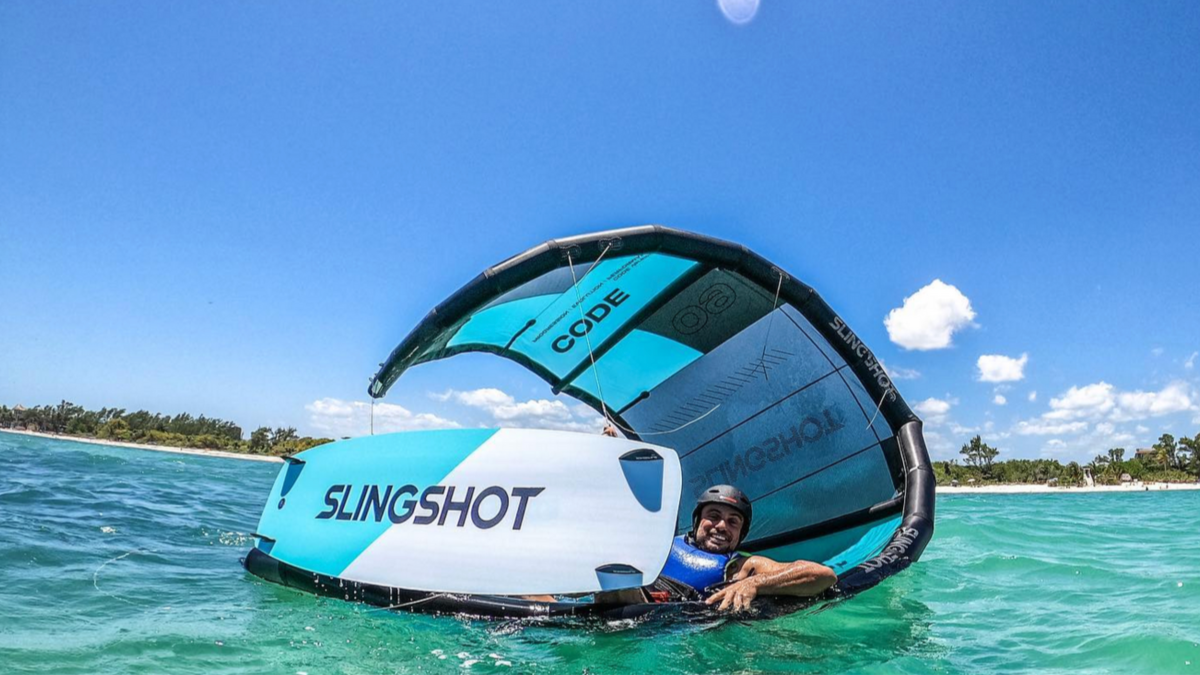
Kitesurfing is an adrenaline sport that mixes board riding with wind power for an exciting rush. It can be thrilling yet intimidating for beginners. To fully enjoy and master kitesurfing, confidence is key. Whether catching your first wind or leveling up, here are tips to boost your confidence on the water!
Nailing the Basics: Your Ticket to Kitesurfing Confidence
Mastering kitesurfing starts with the basics. Dive into lessons with an IKO-certified instructor who will guide you through the fundamentals, such as spot assessment, gear handling, how to use safety systems, launch, and land as a pilot, kite control, body dragging, steady-pull, and water starts. Also, learning how to perform self-landing during your lessons is crucial from the beginning. This skill ensures you're equipped to handle your kite safely when needed.
Why choose an IKO instructor?
- Top-Notch Training: IKO instructors provide a standardized, high-quality safety and best practices curriculum.
- Global Recognition: IKO certification is recognized worldwide, making it easy to continue improving wherever you kite. Get your IKO Vcard with an IKO instructor!
- Safety First: IKO instructors are trained to handle any situation on and off the water so you can confidently learn.
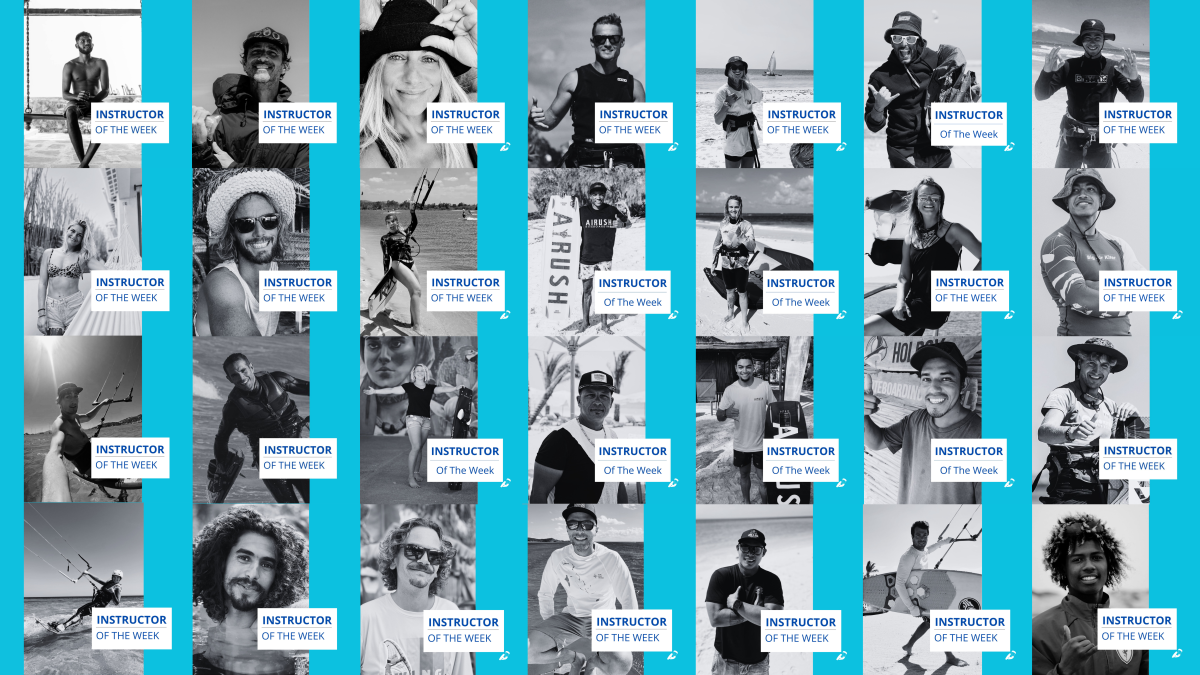
Take your time—each mastered skill builds confidence and brings you closer to pro status. The IKO Assistant Training Course - ATC is a fantastic next step in advancement. It’s ideal for independent kiters eager to enhance their skills and become a kitesurf specialist. Plus, it’s the first step towards a kitesurfing career with IKO. For more info, visit the IKO website.
Master the Skill: The Secret to Consistent Kitesurfing Practice
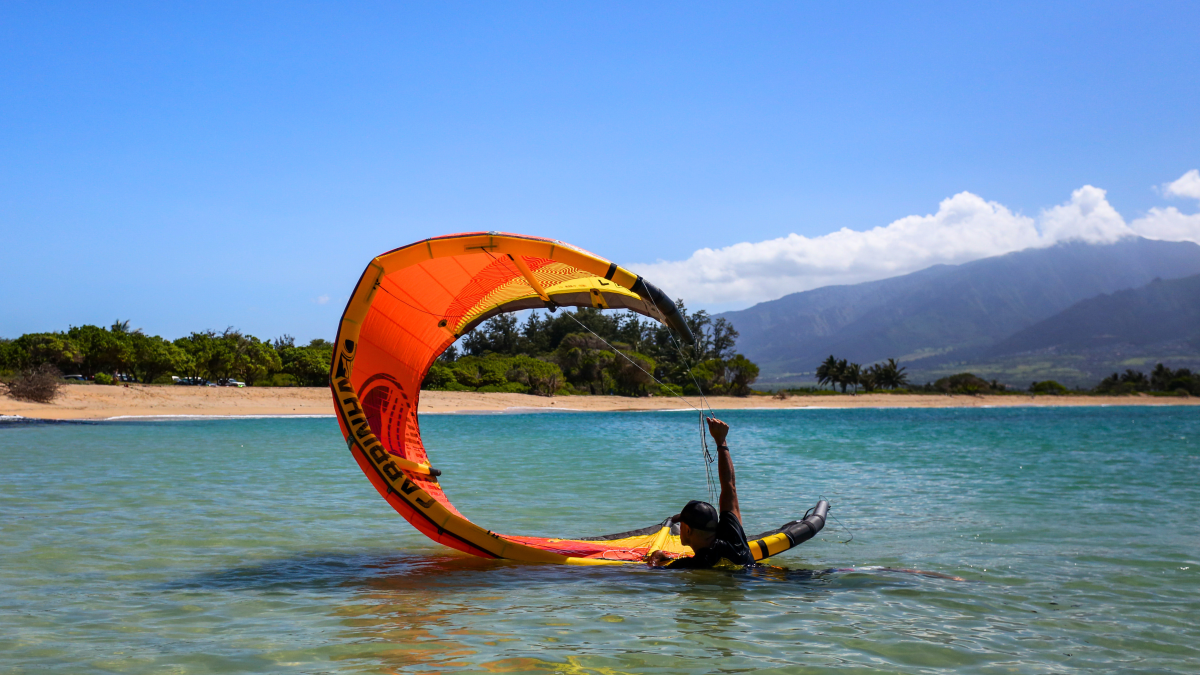
Kitesurfing improves with regular practice. The more time you spend on the water, the better you'll know your gear and handle different conditions. You'll become a versatile kiter by exploring various spots, ready for any challenge. Always prioritize safety by practicing techniques like self-rescue regularly. As you gain experience, learn how to perform self-rescue, self-launching, and pack down in deep water with an IKO instructor to enhance your skills further.
Consider attending the IKO Assistant Training Course - ATC to boost safety and skills. It’s your gateway to enhancing riding skills and mastering essential safety techniques like self-launching, board and kiter recovery, and assisting a fellow kiter. For more details, follow IKO on Instagram and Facebook, and check out the IKOIntl YouTube channel.
Get to Know Your Gear: The Key to Kitesurfing Confidence
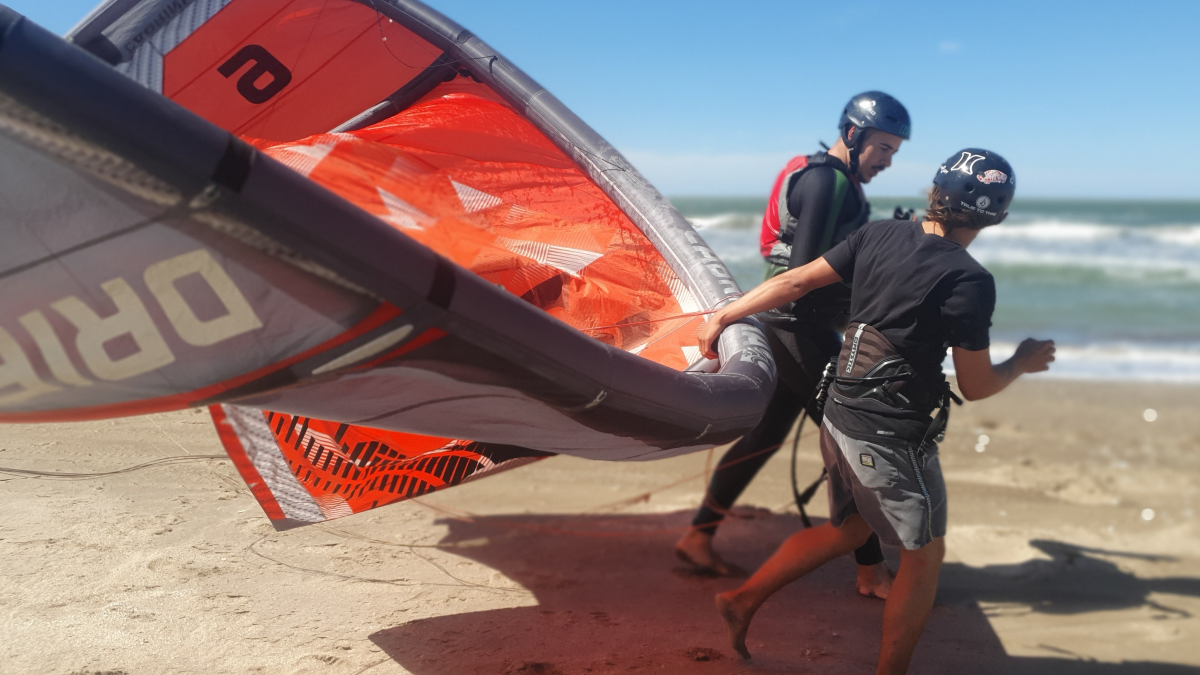
Your kitesurfing gear is your key to success. Master how to set up, pack, store, and repair your kite, manage your lines, and adjust your harness, helmet, and impact vest or buoyancy aid. Knowing and keeping your gear in top shape will boost your confidence and safety.
The IKO Assistant Training Course - ATC will give you all this information and more.
Take Small Steps and Savor Every Win
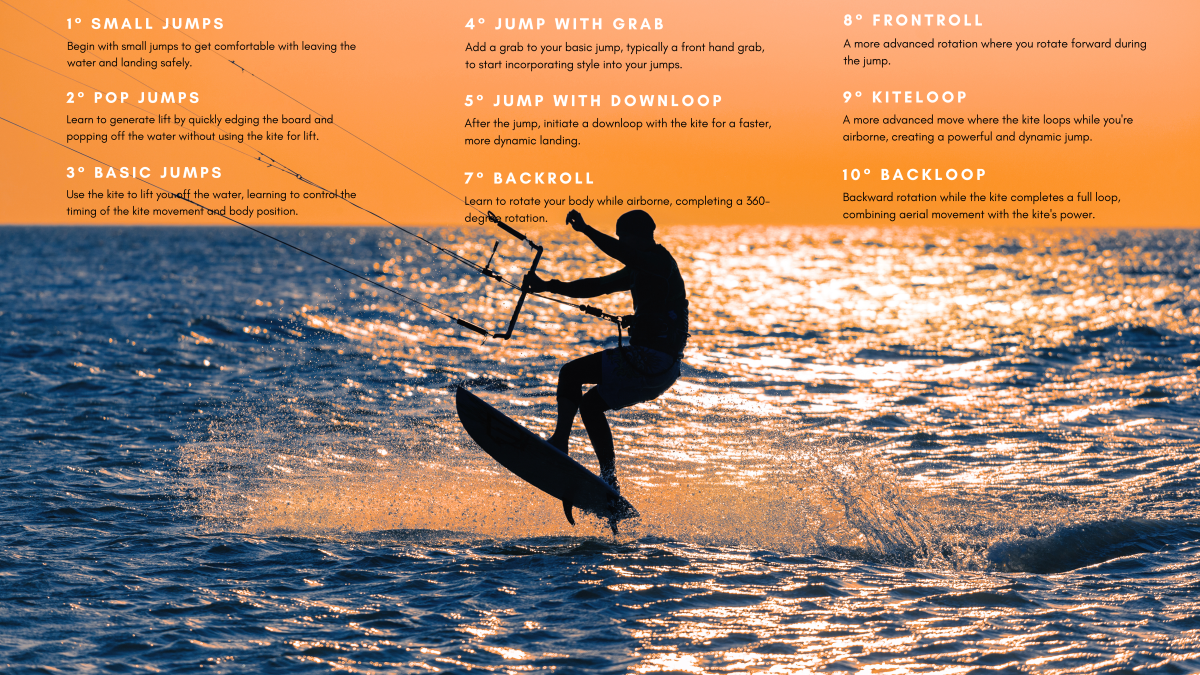
Don’t rush—mastering kitesurfing is a step-by-step process. Focus on one skill at a time and celebrate each small success. This approach ensures steady progress and keeps you motivated and confident.
The IKO Lesson Plan offers a structured guide for constant progress. Each phase builds a strong foundation, leading to continuous improvement. Your IKO certification and Vcard will proudly display your achievements once you’ve mastered the skills.
Find Your Crew: Boost Confidence with a Kitesurfing Community
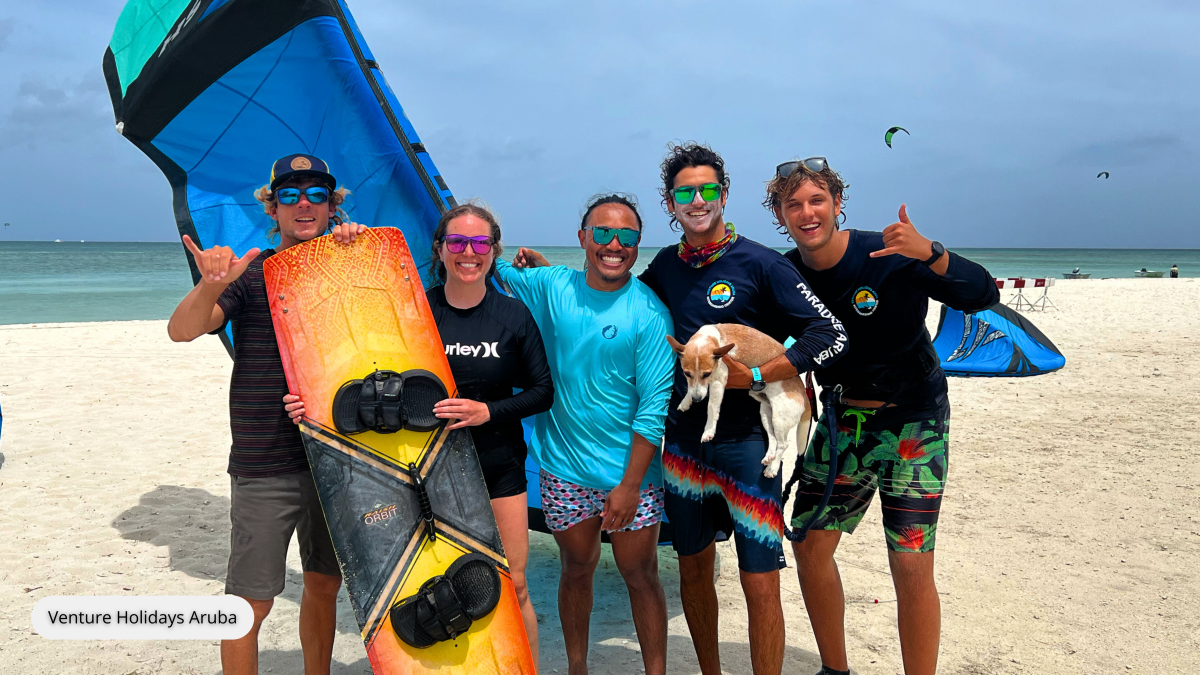
Joining a kitesurfing community boosts your confidence. Share stories, get tips from experienced kiters, and support each other through challenges. You'll also learn beach and water etiquette, ensuring respect and safety for everyone. Connect with the vibrant community through IKO’s Instagram and Facebook, and watch the inspiring videos on the IKOIntl YouTube channel.
Keep Your Head Up: Master Confidence with a Positive Mindset
Your mindset is your secret weapon. Embrace positivity, even when things don’t go as planned. Every mistake is a chance to learn and grow. Don’t let setbacks get you down—it’s all part of the journey. As you overcome challenges, your confidence will soar.
Useful Resources
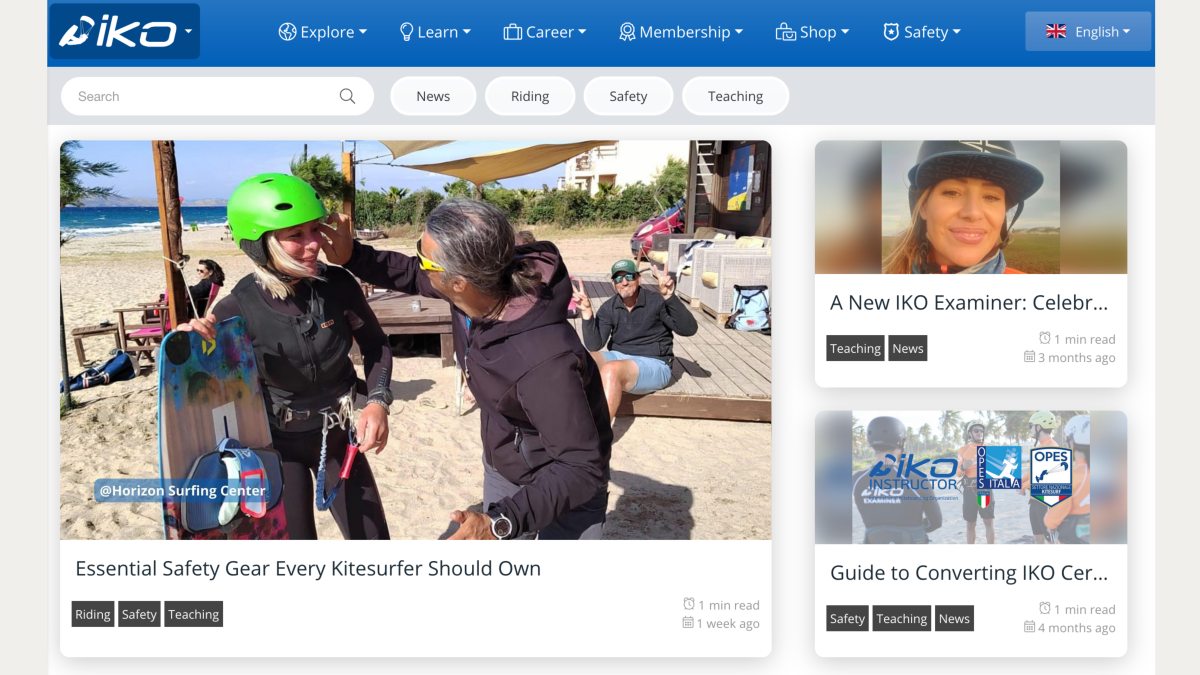
Don’t miss the opportunity to deepen your kitesurfing journey further by reading the IKO blogs.
A must-read is Become a Better and Safer Kiter: Take the IKO Assistant Training Course and Instructor Training Course. Check out the helpful YouTube video that explains the self-rescue procedure, which is essential for every kiter’s safety.
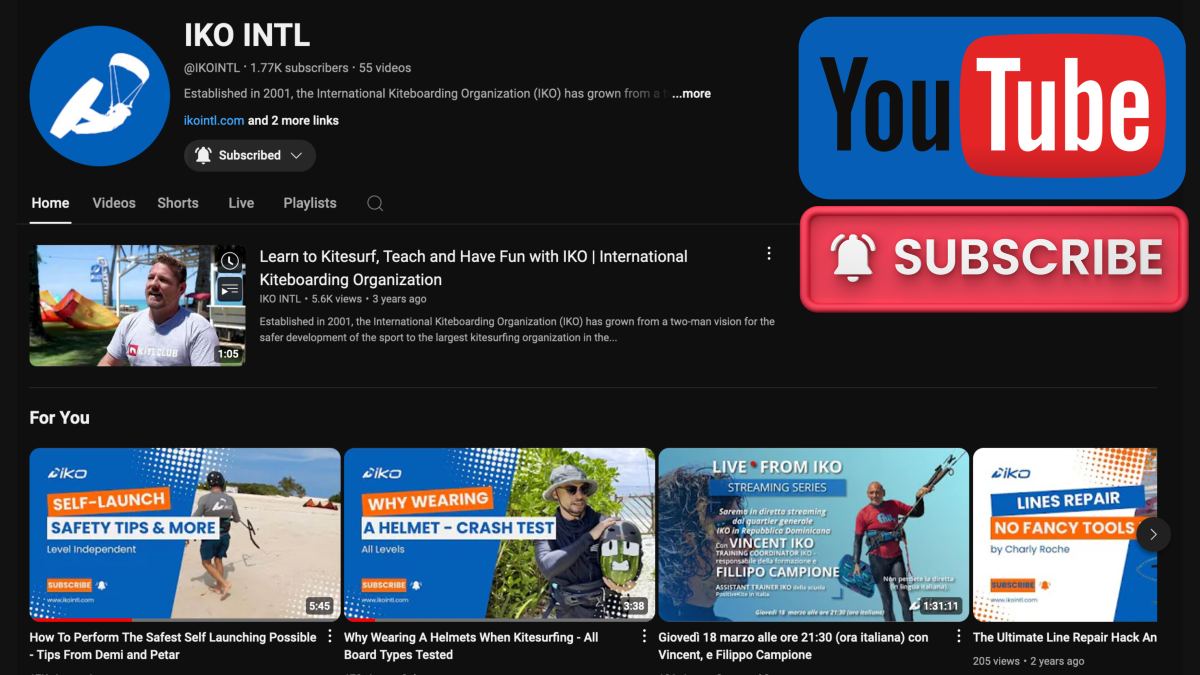
Hey Kiter, Never Stop to Improve Yourself
Building confidence in kitesurfing takes time, practice, and patience. Start with the basics, practice regularly, understand the conditions, and respect your kitesurf level. Enjoy each session and consider the IKO Assistant Training Course (ATC) to enhance your skills. Every kitesurf session brings you closer to becoming a safer, more skilled kiter.
#wearahelmetlikeapro #besmartbesafe #safetyfirst #kitesurfingwithiko
Happy kiting!
Author: Marica Moda
Equipped for any kitesurfing adventure
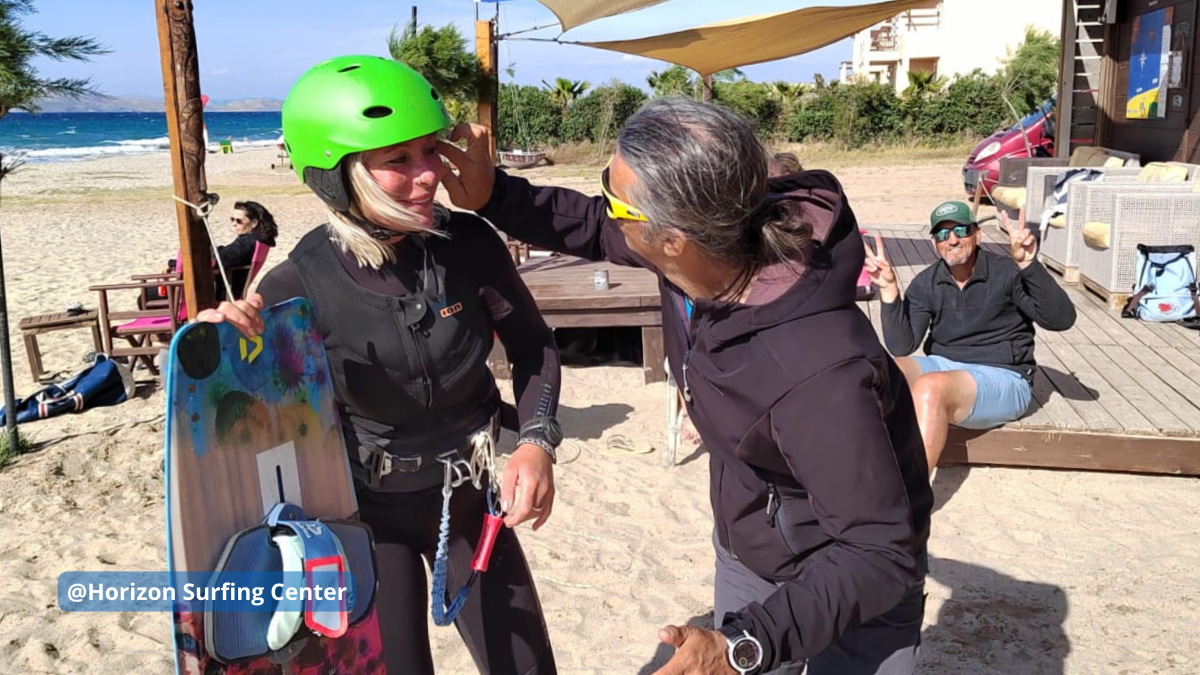
Kitesurfing is pure adrenaline, but like any sport, it carries risks. The proper safety equipment in full working order ensures safe and enjoyable kitesurf sessions; these are good suggestions that IKO wants to give you.
Helmet: Make a Difference by Wearing One.
Ever heard that "helmets are uncomfortable and only for beginners"? It's time to dispel that myth! Your helmet protects you from falls and collisions, whether the water is flat or wavy. Think of the helmet as a shield, like your cell phone cover. It protects you from the sun and defends you during unexpected falls or collisions with the water, your board, or other kiters or obstacles. Kitesurfing helmets are lightweight, comfortable, and designed to withstand hard impacts. They are equipped with drainage holes to prevent the chin strap from causing breathing difficulties underwater and help keep your head afloat if needed.
Helmets are cool and customizable! You can choose vibrant colors, add stickers, or design it to reflect your style. Remember, there's nothing more important than protecting your head. Wear your helmet proudly, just like the pro riders do. Be ready for any adventure.#wearahelmetlikeapro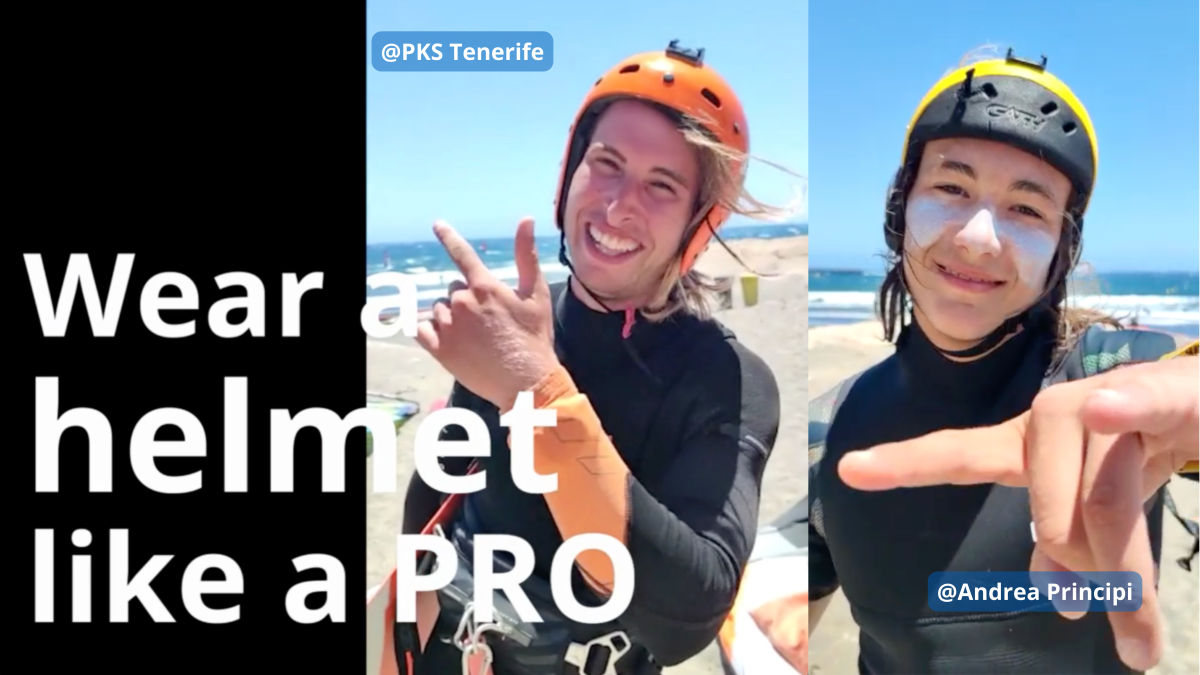
Check out the video on the IKO YouTube channel.
Buoyancy Aid (50 N): Your Protection of Safety
Wearing a buoyancy aid with 50 Newtons (N) during kitesurfing lessons is mandatory when learning with an IKO instructor. This is crucial for your safety. Even in shallow water, unexpected falls can occur. A buoyancy aid keeps your head and torso above water, allowing instructors and rescuers to assist you easily in need.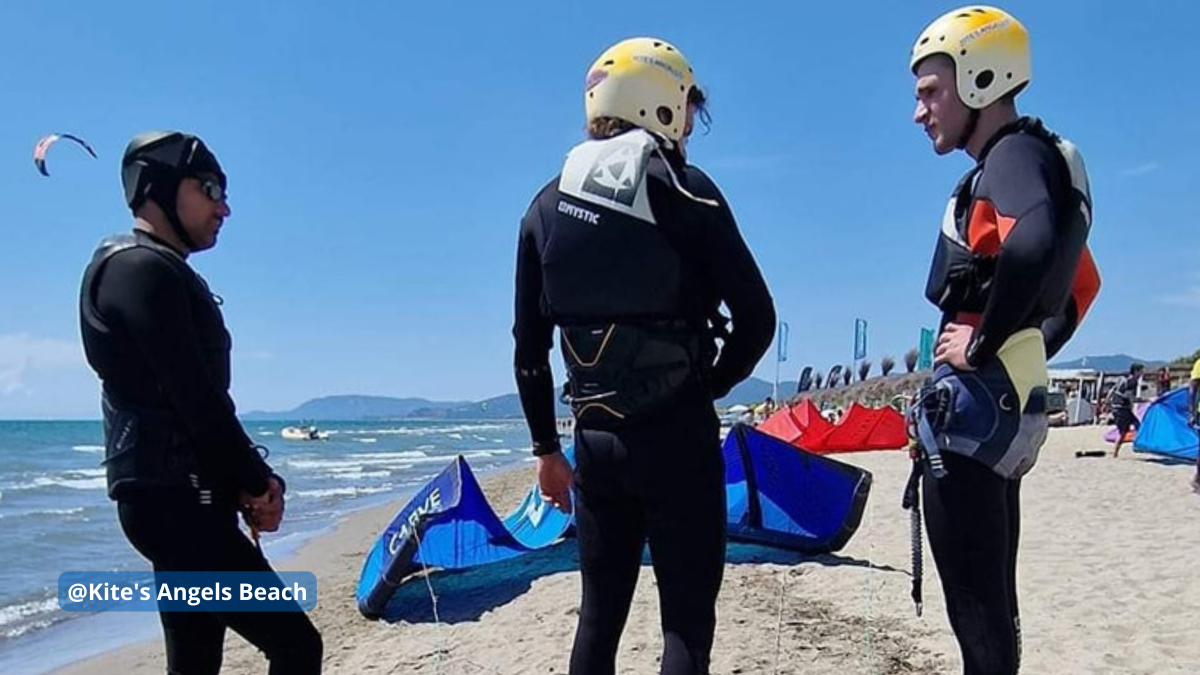
Impact Vest: Everyday Buoyancy Aid
An impact vest provides more agility but less buoyancy compared to a 50 N buoyancy aid. It is called an "impact" vest because it protects you from impacts during falls. While it offers some buoyancy, its primary function is to protect your torso from impacts during jumps, freestyle, or advanced maneuvers with a higher risk and probably hard falls, reducing injuries.
Make sure your vest is well-fitting and comfortable. It should allow you to breathe well without overtightening your rib cage and provide full mobility. This ensures you can perform all maneuvers without feeling restricted.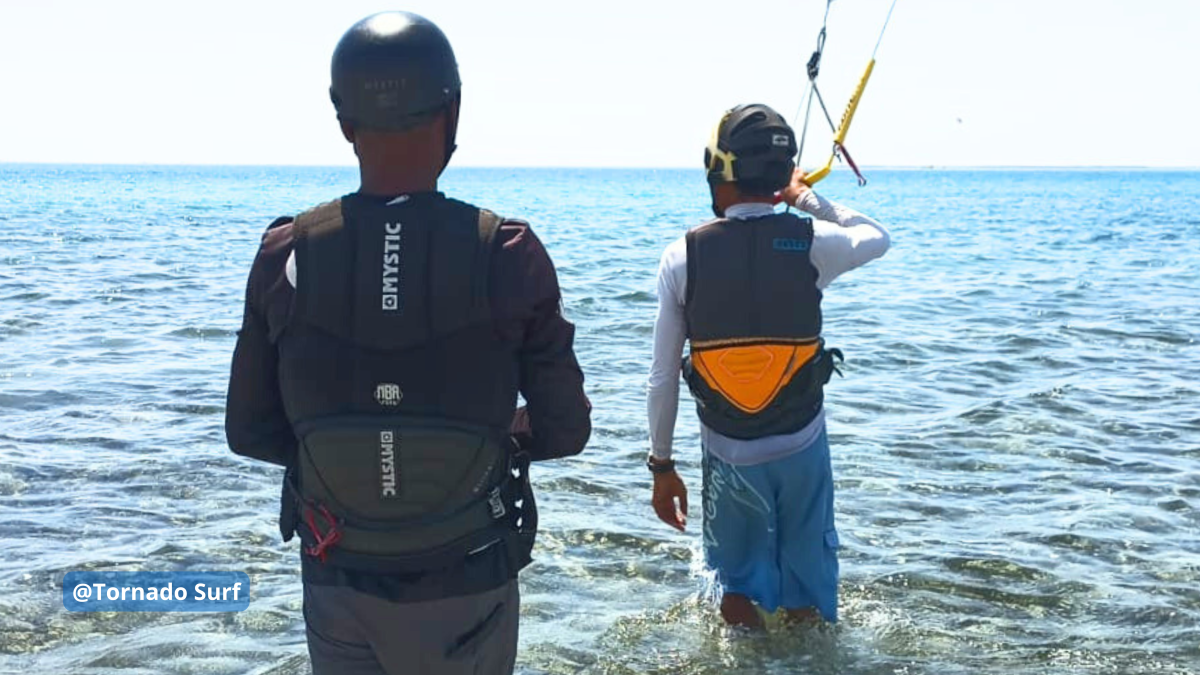
Kite Leash: Your Inseparable Companion
The kite leash is a crucial piece of safety equipment in kitesurfing. According to IKO standards, attaching the kite leash to the front of your harness is essential. This ensures you can easily reach it with both hands in an emergency. Fastening it behind or to one side of the harness can pull you backward or sideways, making it hard to reach the quick-release system.
Attaching it to the front ensures the quick-release system works properly and doesn't snag on your harness hook. Always test the kite leash before entering the water to ensure it is not blocked by salt or sand, including the quick release of the chicken loop. It's better to know it works before you enter the water than to find out in an emergency.
Kite Line Cutter: Your ace in the hole
IKO recommends having a line cutter as part of your safety gear. Keeping it on your harness can turn a dangerous situation into a story to share with friends on the beach at sunset. It’s an investment in safety for you and other kiters in case someone gets tangled in the lines. Be aware that not all harnesses come with a line cutter included. Check your harness to see if it has one, and if it doesn't, make sure to get one separately. Regularly ensure the blade isn't rusted, just as you check your phone's battery before leaving the house.
To prevent the blade from rusting, cover it with candle wax. This will protect the blade from water, salt, and sand, but it will also ensure that if you need to use the line cutter, the wax will quickly come off, allowing the blade to work effectively.
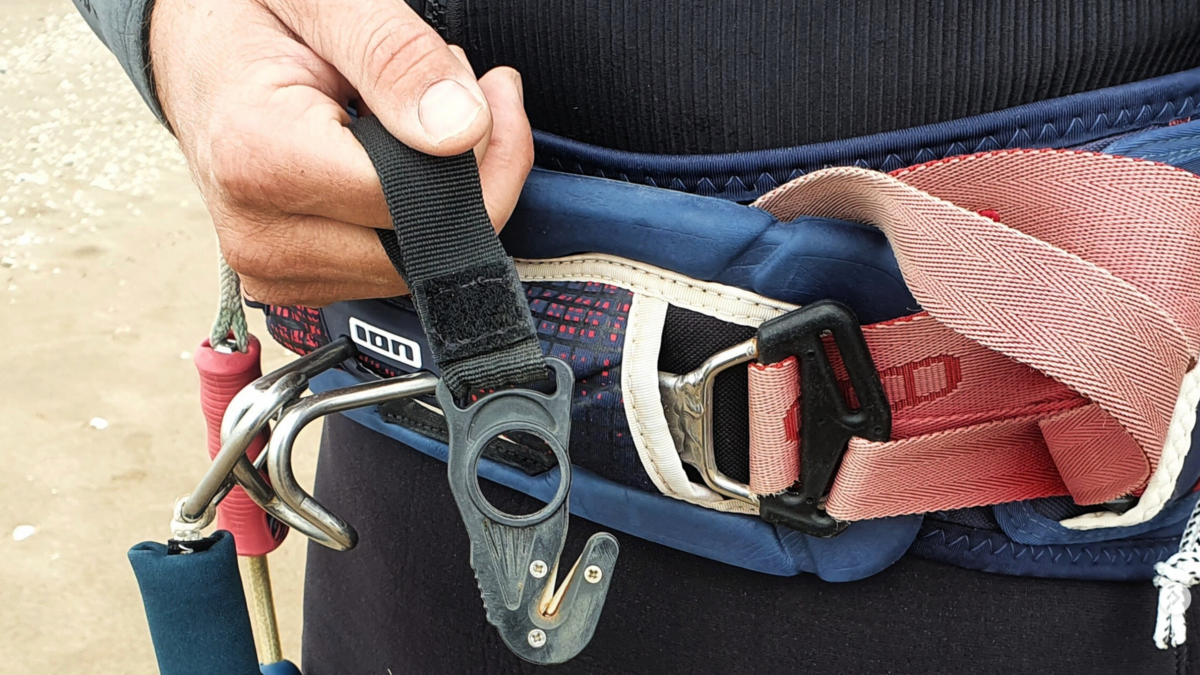
#BeSmartBeSafe
Equipping yourself with the must-have safety gear is about following guidelines and embracing a preparedness mindset and respect for the sport. Your helmet, buoyancy aid, impact vest, kite leash, and line cutter are critical in safeguarding your kitesurfing adventures. They turn potential hazards into manageable risks so you can focus on the excitement of your kitesurfing session. Each item is designed not only to protect but also to enhance your overall kitesurfing experience.
Next time you go kitesurfing, wear your helmet with pride and your buoyancy aid or impact vest confidently, and check that every piece of your equipment is in top condition. You protect yourself and set an example for others in the kitesurfing community.
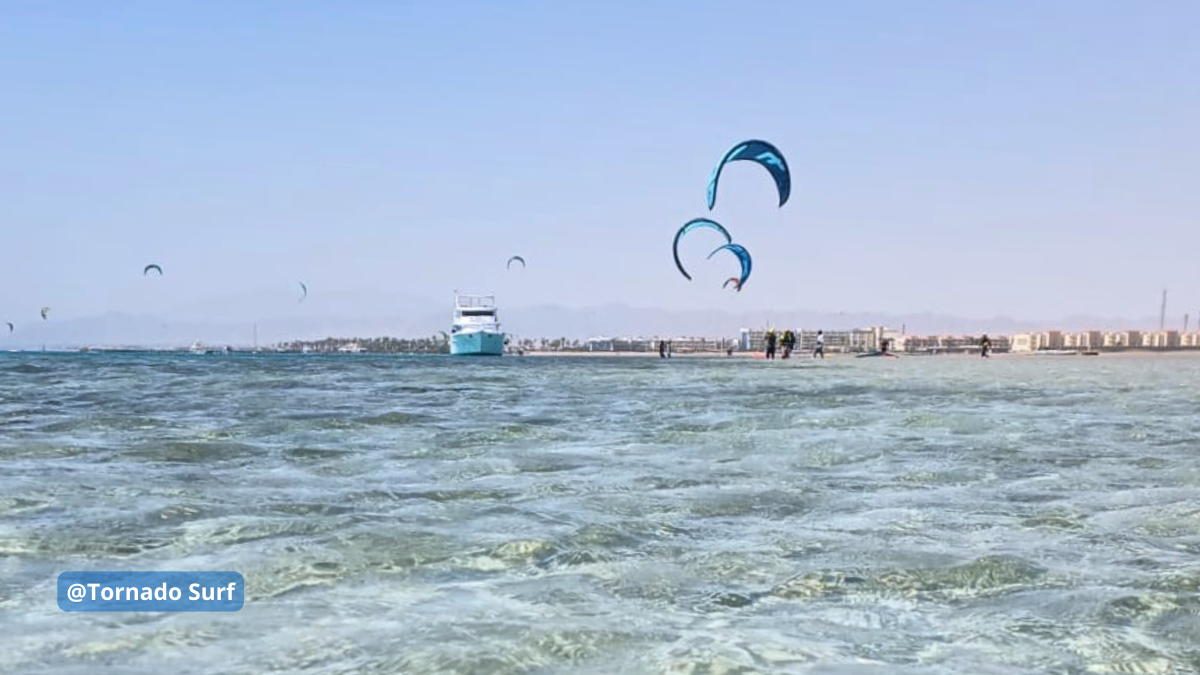
Stay safe, ride hard, and make every session an epic adventure.+
Happy kitesurfing!
#wearahelmetlikeapro #StaySafe #KiteSmart #SafetyFirst
For more tips and safety guidelines, visit the IKO YouTube channel: @IKOintl
Virginie Rochette: A Journey of Passion, Dedication, and Adventure in the World of Kitesurfing.
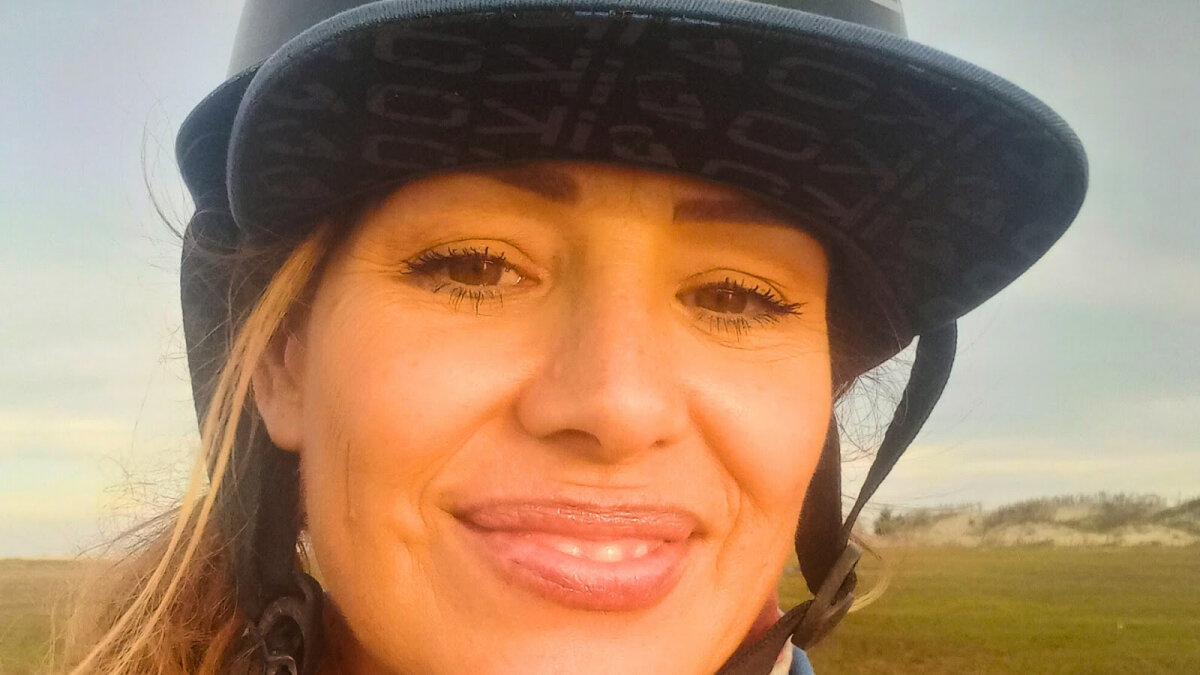
Exploring the World of Kitesurfing with Virginie.
In the dynamic world of water sports, kitesurfing stands out as an exciting sport that connects with nature and offers incredible adventures, attracting enthusiasts from every corner of the globe. Behind the beauty and adrenaline of this discipline often lies a unique personal story, a journey of discovery, teaching, and passion. Virginie, new IKO Examiner, is the perfect example; her story perfectly embodies the fusion of adventure, passion, and dedication. Through her eyes, smile, and stories, we tell you how beautiful and fascinating the world of kitesurfing can be. Let yourself be inspired!
“I have always been a passionate enthusiast of sports, but especially board sports!”
The Virginie's Journey into Kitesurfing.
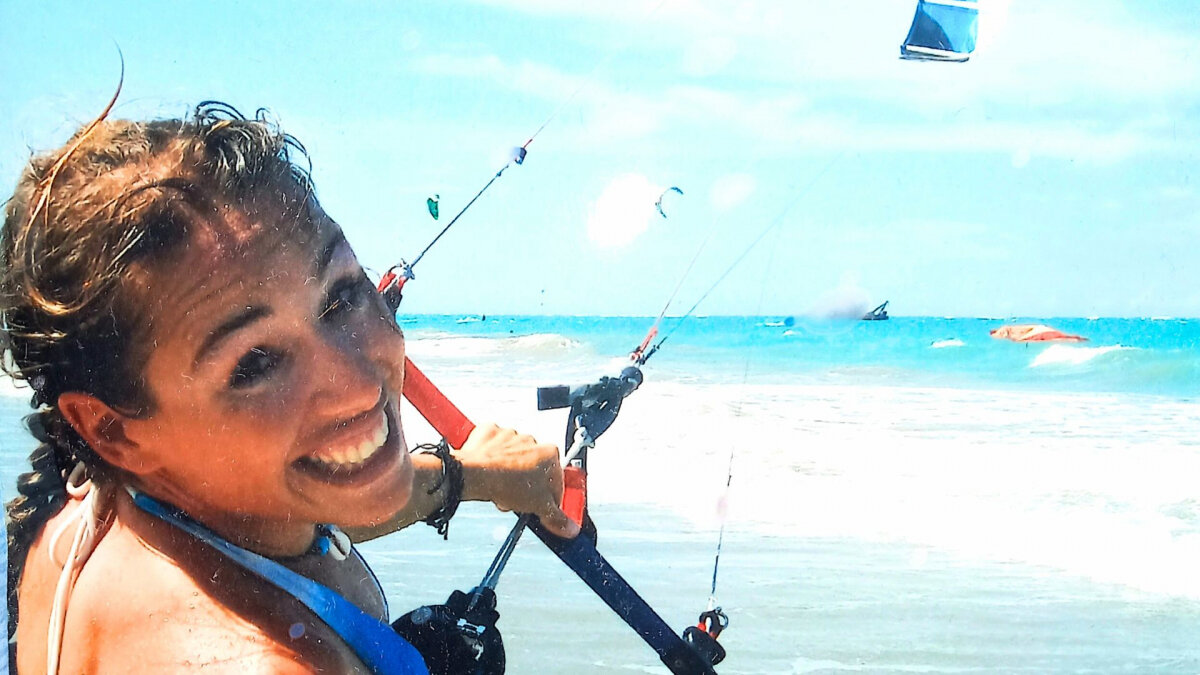
Virginie took her first steps into the world of sports from a young age. Hailing from Grenoble, amidst the majestic French Alps, she cultivated her passion for board sports and nature from a tender age. Her love for snowboarding led her to tackle snowy peaks, while the allure of wind and water drew her towards windsurfing. It was during a day out on the lake, watching her snowboarding friends take up kitesurfing, that the desire to try this new sport ignited within her. Despite warnings from her male friends, who deemed kitesurfing too dangerous for a girl, Virginie embraced the challenge with determination and embarked on her journey into the world of kitesurfing.
“My male friends told me that I was a girl, so I shouldn't try because it was difficult and dangerous. However, their words only further fueled my motivation, and I promptly booked a package of kitesurfing lessons. Hahaha! Back then the equipment was quite different, and I began learning with a 2-line kite and a directional board with foot straps...despite being a beginner, I managed to cross the pond on the first attempt, but I didn't really know how to stop!
The Decision to Embrace Kitesurfing Professionally.
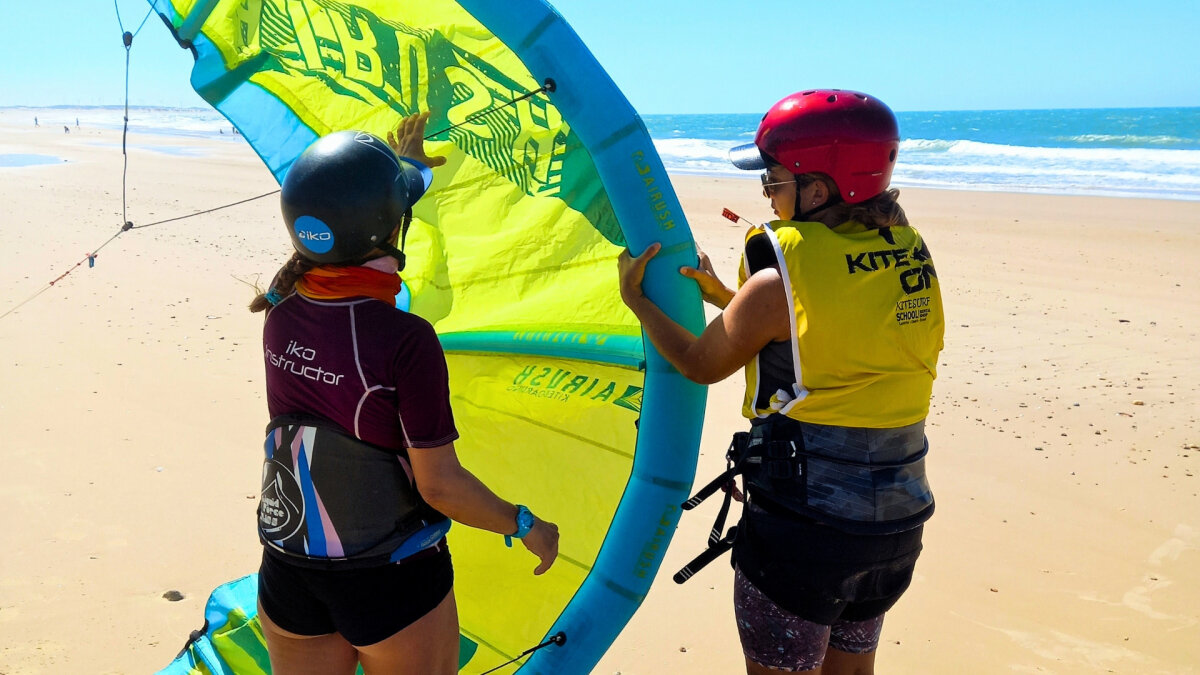
An encounter with a kitesurfing instructor during a trip to Egypt proved to be a pivotal moment for Virginie. Attracted by the idea of turning her passion into a career and with the desire to explore the world following the wind and doing what she loved, she made the life-changing decision to pursue certification as an IKO Instructor.
“I decided to take the IKO Instructor Course (ITC - Instructor Training Course) to see how it was, and then I took one year out of my job to put it into practice and start traveling.”
She traveled the world's coastlines, including those of the Dominican Republic, Venezuela, Brazil, and Cape Verde, immersing herself in diverse cultures, encountering new challenges, and accumulating invaluable experiences along the way.
From Passionate Kiter to IKO Examiner.
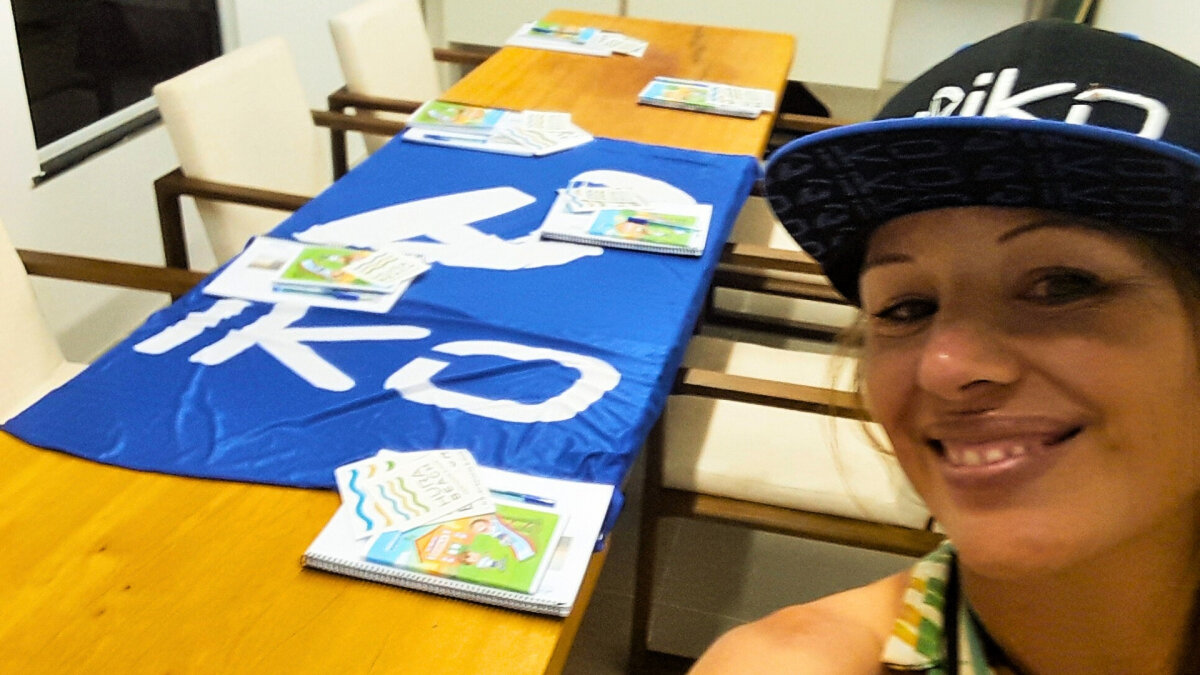
After years of teaching and dedicating herself to kitesurfing, Virginie achieved a new milestone by becoming an IKO Examiner. Her journey to this prestigious role was marked by challenges and sacrifices, but also by unwavering determination; for this reason, it was even more satisfying. From managing a kitesurfing school in Brazil to organizing IKO professional courses, Virginie has demonstrated extraordinary passion and commitment to promoting and developing kitesurfing.
“It hasn't been easy; it's been a long and difficult process, with hours and hours of study and training. But it was worth it, and now I’m looking forward to putting all this knowledge into practice on my own!”
Promoting Kitesurfing in Brazil and Beyond.
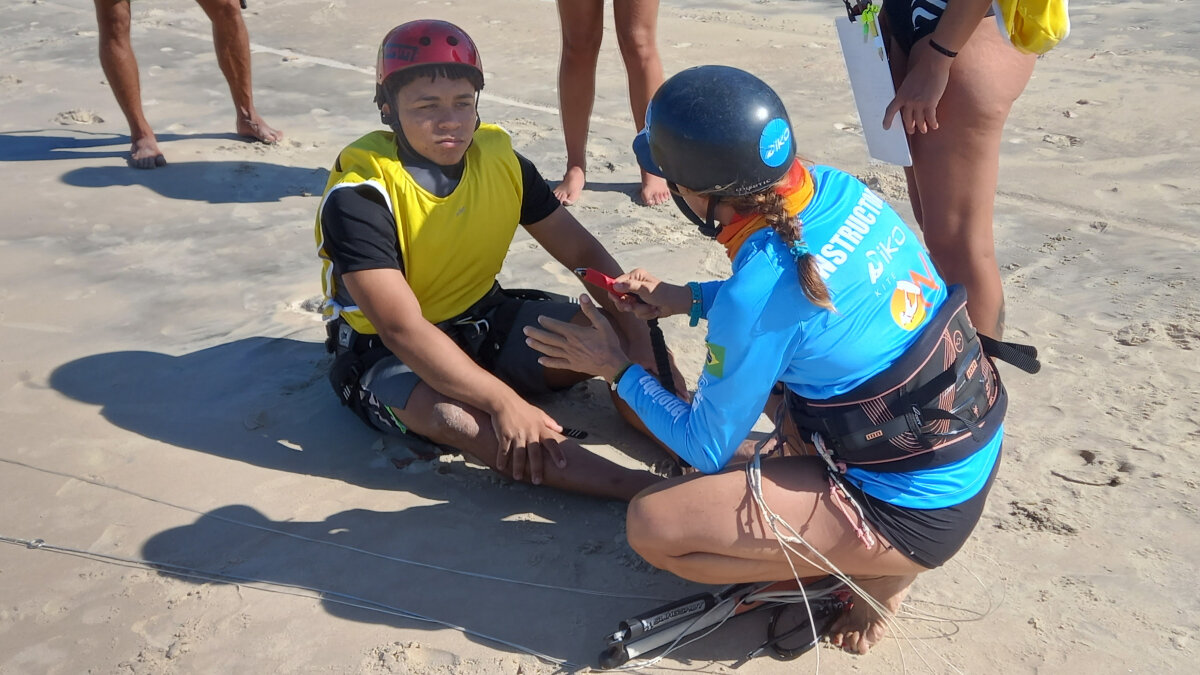
As an IKO Examiner, Virginie aims to promote and advance the sport of kitesurfing, focusing particularly on her efforts in Brazil, where she strives to foster its growth and development within the local community. In a country with many kitesurfing schools and instructors, her goal is to maintain high standards of education and safety, motivating potential kiters to obtain IKO certification. Leveraging her experience and dedication, Virginie aims to cultivate new kitesurfing enthusiasts and encourage female involvement in this captivating sport. Additionally, she aims to tackle the challenges faced by Brazilian kiters who encounter economic and logistical obstacles in their journey to become IKO Instructors.
"Sometimes it can be difficult for them to envision their future, plan their time, and investment, so I’m providing various payment and organization solutions."
Thrilling Moments and Adventures as an IKO Instructor.
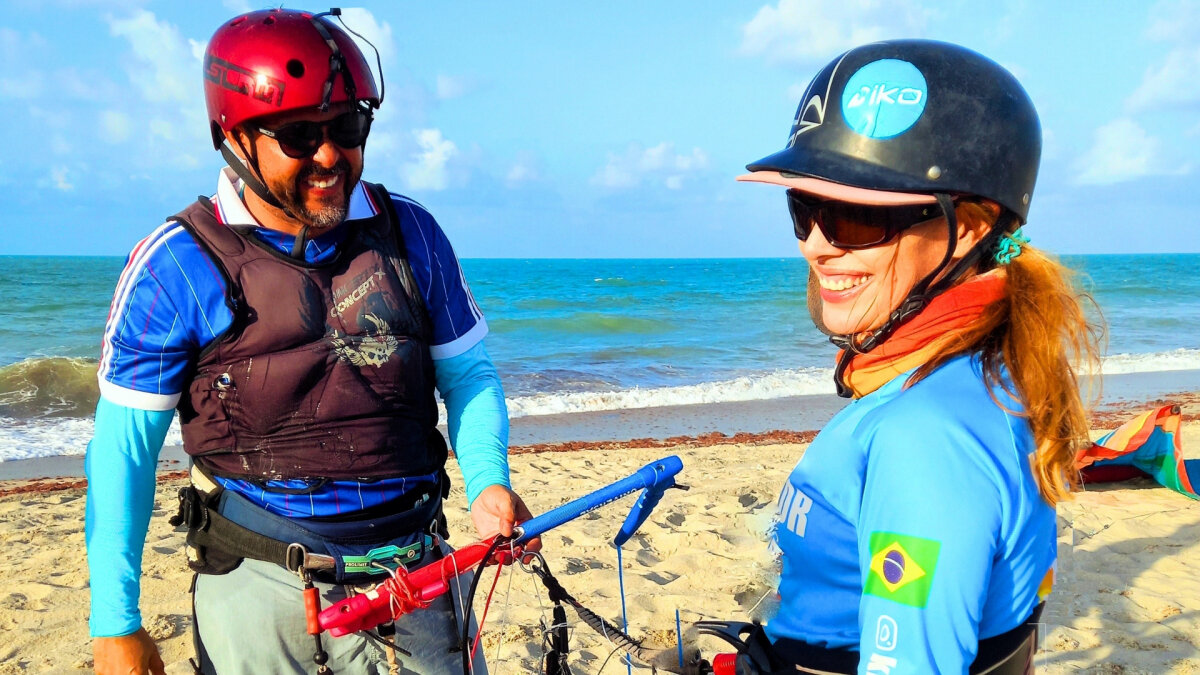
Throughout her journey as an IKO Instructor, Virginie has experienced many memorable moments. 'I have a lot of stories!' she exclaims, with many students leaving a lasting memory. However, what truly brings her satisfaction in her work is witnessing her students progress in kitesurfing, especially when they start with no experience. After all, seeing their excitement as they conquer new skills and overcome challenges is the ultimate reward for her dedication and passion. This is one of the most beautiful things for an IKO Instructor, this is the #ikoinstructorlifestyle.
Unraveling Lagoinha: A Kitesurfer's Paradise in Ceara, Brazil.
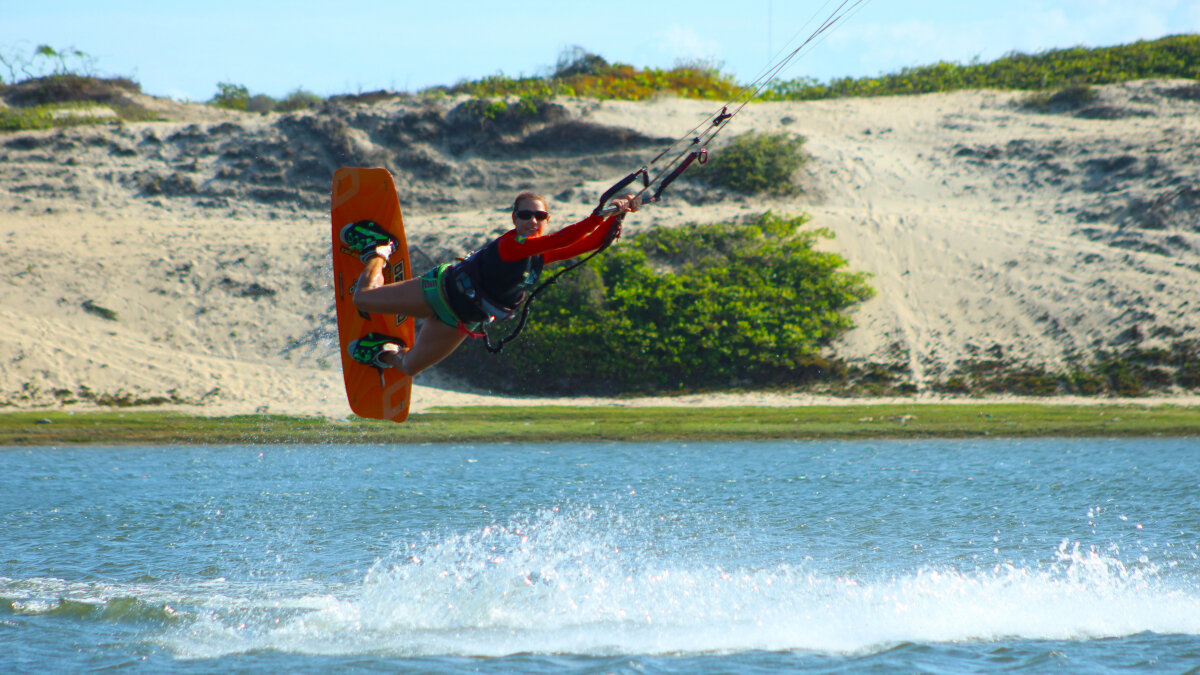
For Virginie, Lagoinha in Ceara, Brazil, represents the perfect spot for kitesurfing. With its vast pristine beach and the tranquility of Jegue Lagoon, it provides a picturesque environment for kiters of all levels to enjoy exciting kitesurfing sessions and moments of peace in nature.
“My favorite spot is, of course, Lagoinha in Ceara, Brazil, where I live. It boasts a vast and uncrowded beach with stunning scenery, including the picturesque Jegue Lagoon. This lagoon offers buttery flat, shallow freshwater and enjoys a consistent wind for seven to eight months of the year. It's ideal for teaching and practicing unhooked freestyle, my favorite discipline. In the tranquil waters, there are usually few other kiters at the end of the day, with approximately ten hours of wind and sunshine daily. The natural landscape is breathtaking, especially during sunset when you may be fortunate enough to witness both the sun setting and the moon rising simultaneously—a truly unforgettable experience!”
Virginie's Perspective: The Thrills and Challenges of Becoming an IKO Instructor.
Virginie believes that becoming an IKO Instructor is an incredibly rewarding experience. For her, the job is not just a source of income but an opportunity to live her passion, meet different people, and create special bonds. She believes that teaching kitesurfing can truly change the lives of students and loves the idea of sharing her knowledge in paradisiacal locations around the world. Despite the difficulties and challenges inherent in being an IKO Instructor, Virginie firmly believes that this profession offers unparalleled opportunities for both personal and professional growth.
"Especially for women, kitesurfing doesn't necessarily require strength or weight; it's more about technique (and good lessons from the beginning). Of course, you have to be (or become) a sporty person, but it's more accessible than it seems, and women make excellent IKO Instructors. We generally have a natural compassion for our students, patience, and professionalism, which are essential for this job (often we have more of it than men). We must establish ourselves from the start by being pragmatic and professional, teaching both men and women.
The world of kitesurfing needs more female IKO kitesurfers, assistants, instructors, coaches, and Assistant Trainers, and I hope that my new status as an IKO Examiner inspires more women to follow in my footsteps!"
Exploring the Essence of Kitesurfing: Virginie's Journey.
Virginie's journey into the world of kitesurfing is a captivating exploration of passion, determination, and adventure. Through her story, we can grasp the essence of this fascinating sport and its ability to transform lives and inspire future generations. Whether teaching beginners or examining aspiring IKO Instructors, Virginie continues to embody the core values of IKO Instructor: passion, safety, and dedication to her craft.
Author: Marica Moda
How IKO Instructors Can Convert Their Certification with OPES (Organization for Sports Education) Recognized by CONI (Italian National Olympic Committee).

Guide to Converting IKO Kitesurf Instructor Certification to OPES/CONI Certification - Sailing Instructor, discipline DV005 - Kiteboarding, according to the requirements of the National Sports Qualifications System SNaQ.
IKO assists you in navigating the steps to obtain the dual certification IKO - OPES/CONI and pursue the profession of Kitesurf Instructor in Italy.
Why obtain the dual certification IKO - OPES/CONI?
The conversion opportunity is open to all certified kitesurf instructors, whether Italian or foreign, working in Italy. Its aim is to improve the quality of sports education and ensure greater professionalism and economic fairness in the world of kitesurfing.
This dual certification ensures that kitesurf instructors have the necessary skills to teach effectively and safely, offering the opportunity for regular employment within sports associations and/or kitesurf schools, and ensuring stable income and associated labor rights.
CONI, OPES, and IKO together in Promoting Sports in Italy.
The Italian National Olympic Committee (CONI) is the national body responsible for the promotion and organization of Olympic sports.
OPES (Organization for Sports Education) is a sports promotion organization recognized by CONI. It collaborates closely with CONI and international organizations like IKO (International Kiteboarding Organization) to promote physical education and sports in Italy.
OPES is committed to converting IKO Kitesurf Instructor certifications to OPES/CONI certifications and recognizes the teaching provided by IKO as of a high standard. Thus, OPES enables the conversion of instructors' diplomas issued by IKO Examiners into OPES/CONI diplomas.
This collaboration is essential to ensure a professional and safe sports system for all.
Towards a Safer and Professional Sports Future: Optimism and Collaboration between IKO - OPES/CONI.
The goal is to improve the quality and safety of sports education in Italy, building a more solid and professional future for the kitesurfing world in Italy, in compliance with local regulations.
Thanks to the collaboration between IKO and OPES/CONI, the procedure for converting the IKO certification to OPES/CONI certification is straightforward, affordable, and can be carried out by all IKO Instructors wishing to work in kitesurf schools in Italy that are part of the same association.
Do you want to become an IKO Instructor and work in Italy? Here's how your IKO certification will be converted into an OPES/CONI certification.
The procedure to obtain the dual certification is as follows:
- At the end of the IKO course ITC (Instructor Training Course), the organizer will compile a form with the data of instructor candidates who have successfully completed the course, qualifying as IKO Kitesurf Instructors Level 1.
- The form will be countersigned by the course's responsible IKO Examiner.
- The form will be sent to the OPES central membership office, which will issue the certifications at a cost of €25.00 per diploma.
- All candidates who successfully complete the IKO Instructor Course - ITC L1 will receive the National Diploma as Kitesurf Instructor OPES/CONI - Sailing Instructor, discipline DV005 - Kiteboarding, according to the requirements of the National Sports Qualifications System SNaQ.
If you are already an IKO Instructor, Italian or foreign, and want to work in Italy, here are the steps to follow.
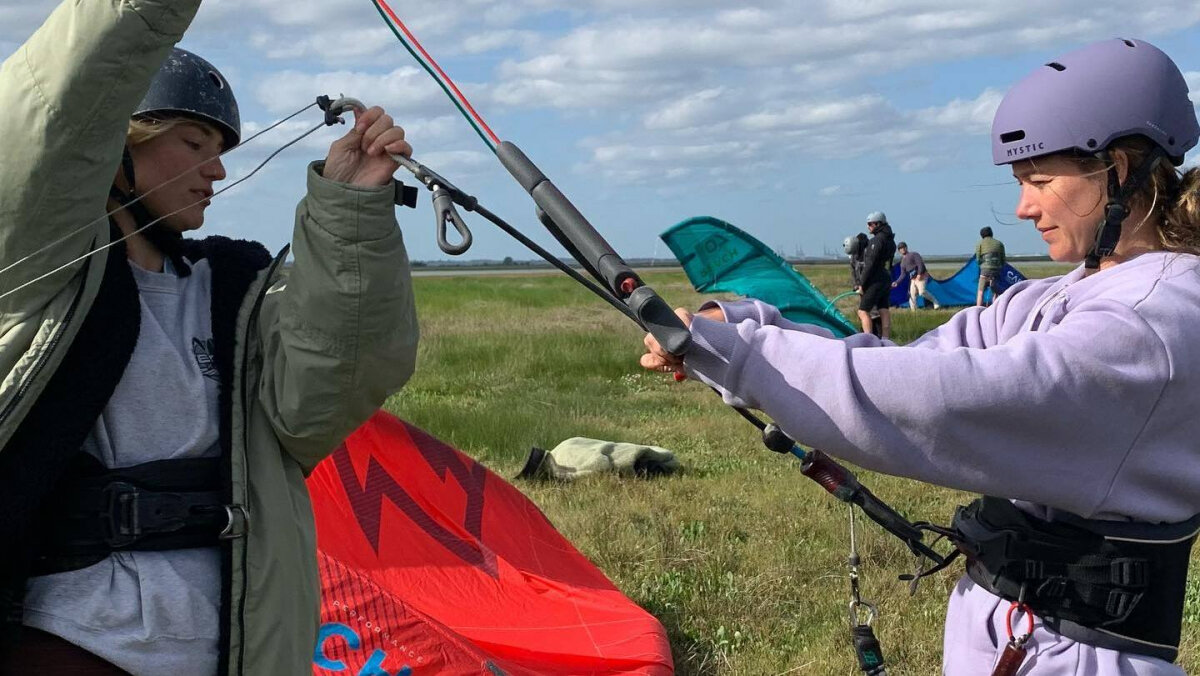
For already certified IKO Instructors who want to work in Italy, it is possible to directly request the conversion of their IKO Kitesurf Instructor certification from OPES/CONI, obtaining the National Diploma as Kitesurf Instructor OPES/CONI - Sailing Instructor, discipline DV005 - Kiteboarding, according to the requirements of the National Sports Qualifications System SNaQ.
The procedure requires filling out a form, paying an annual fee to OPES/CONI, and submitting the necessary documentation. Once the conversion is completed, the OPES/CONI certification will be issued.
The steps to follow are:
- Fill out the conversion application form downloadable from the IKO/OPES website. You can find the request form here: OPES/IKO Conversion.
- Attach your IKO Kitesurf Instructor certification to the email.
- Attach the receipt of payment of the annual fee paid to OPES/CONI, currently €15.00: payment to be made by bank transfer to O.P.E.S. - Organizzazione Per l’Educazione allo Sport - Via Salvatore Quasimodo, 129 – 00144 ROME.
- Cod IBAN: IT11L0538703208000001088781 – BIC/SWIFT: BPMOIT22XXX
- Banca Popolare dell’Emilia Romagna
- Specify in the reason for payment: "conversion IKO/OPES name and surname".
- Send all documentation to the following email address:
- OPES/CONI will issue the new certification.
It should be noted that the OPES/CONI equivalence applies only to IKO Instructors with a valid certificate. If the IKO certificate has expired, the OPES/CONI equivalence will not be valid, but you can attend an IRC course (Kitesurf Instructor Reinstatement Course) for reinstatement.
The agreement, in force since 2020, has an annual duration and is tacitly renewed in the following years.
The national contact person for OPES/CONI for maintaining relations with IKO is Andrea Frateiacci.
Some Italian IKO Centers offer certification conversion to their instructor candidates.
To facilitate instructor candidates, some Italian IKO Centers offer to cover the cost of converting the IKO - OPES/CONI certification for their candidates, including it in the cost of the professional ITC course (Instructor Training Course).
To ensure that the certification conversion is included, contact directly the IKO Center where you will attend the professional instructor course (ITC - Instructor Training Course).
Joint Commitment.
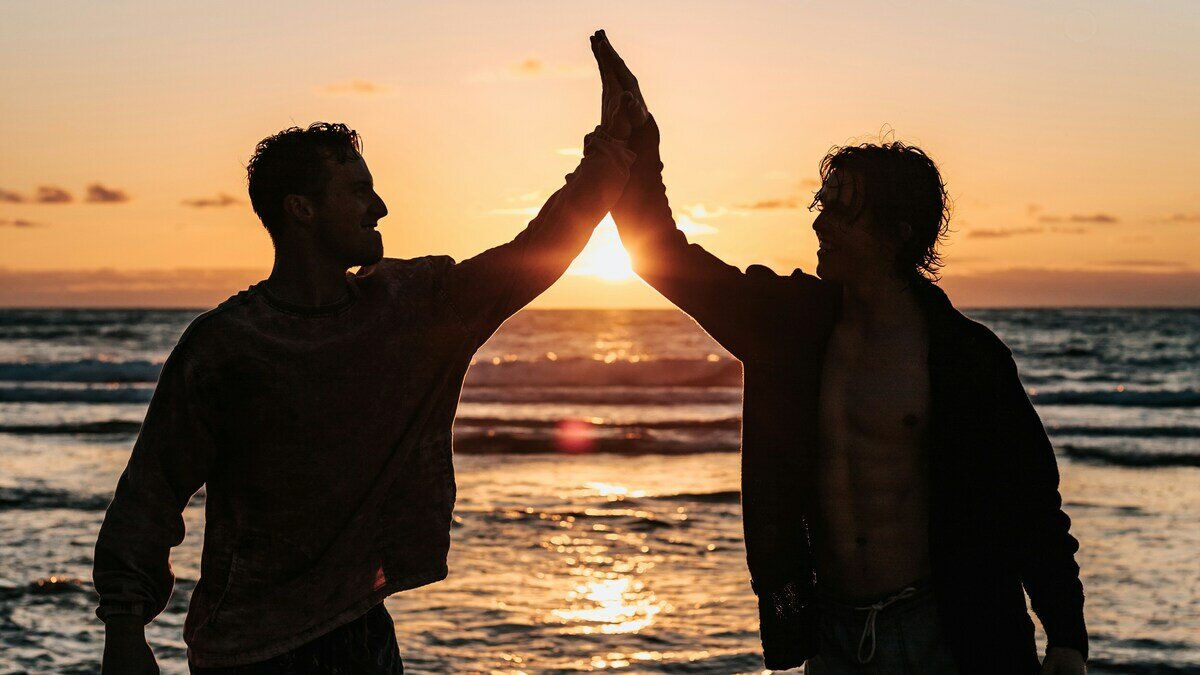
This collaboration represents a significant step towards a safer, more professional, and fairer sports future for kitesurfing in Italy.
This joint commitment to excellence in sports education reflects the determination to promote high standards in the sector, ensuring a professional and safe environment for all kitesurfing enthusiasts in Italy.
An interview with IKO and IWO Examiner Daniele Olivieri
A team of IKO Examiners recently launched the International Wingfoil Organization (IWO) which is dedicated to teaching and training wingfoil enthusiasts and instructors.
We met up with IKO and IWO Examiner Daniele Olivieri to learn more about the IWO and find out what it’s like to be a wingfoil instructor.
Daniele has been teaching watersports for more than 20 years and is the founder of KTS Tarifa.
How did you get into wingfoiling?
My first approach with the sport was in spring 2019 when Robby Naish came to Tarifa for a dealer meeting and he inspired me again to learn this great watersport. After that I continued my practice when F-ONE released the first wing gear on the market and had an official test in Mauritius in August 2019. Since then, I’ve continued my progression and had great experiences enjoying the sport.
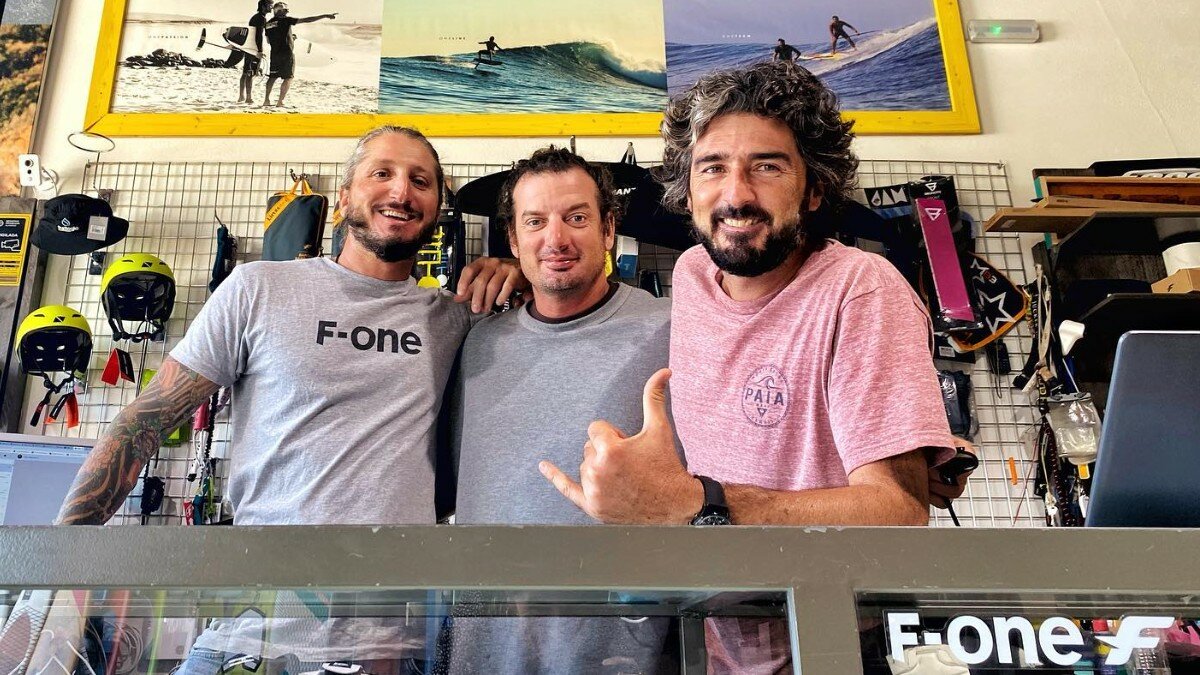
Tell us about your favorite wingfoil experience.
One of my best wingfoil experiences was in November 2021 in Jericoacoara, Brasil, where I had the opportunity to surf long and clean gentle waves. That day I realized how smooth it is gliding on the foil only by the energy of the wave. Wingfoil is a fusion of different watersports which allows you to get the best out of each one.
Tell us about the IWO. What is its mission and why was it founded?
The IWO was born with the intention of helping and educating the wingfoil community. The idea comes from IKO to share knowledge and experience, to create safety procedures and teaching standards, and to make the sport more accessible.
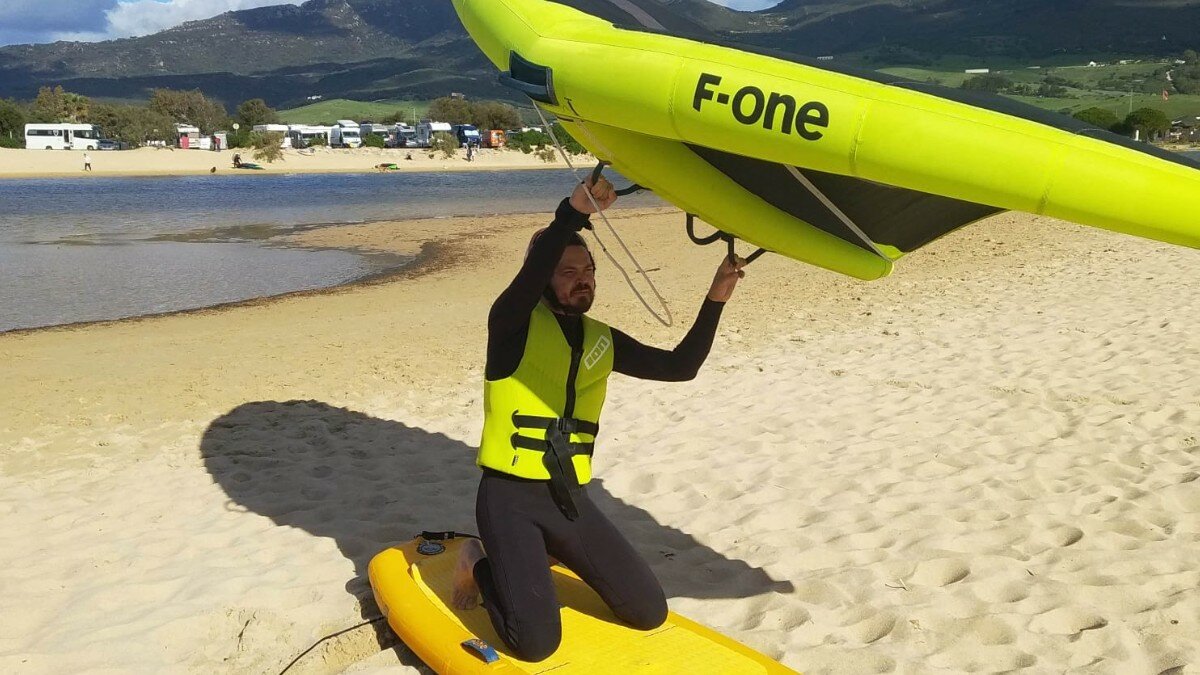
What’s it like being an IWO Examiner and Instructor?
It’s a unique opportunity to be part of IWO as instructor but also as examiner. In the last two years I have improved my skill as a wing instructor and now, combined with my experience as wing rider and examiner, I share all my passion and knowledge to teach students and new instructors. My greatest satisfaction is seeing how students learn and enjoy their wing lessons and also having the capacity to train future instructors!
What advice would you give to someone thinking about becoming a wingfoil instructor or affiliating their school with the IWO?
If you’re passionate about wingboarding, the IWO gives you the possibility to become a professional instructor with theoretical and practical competence to educate the wing community. The IWO also also affiliates wingfoil schools around the world in order to grow the sport internationally and ensure the quality of teaching and safety standards.
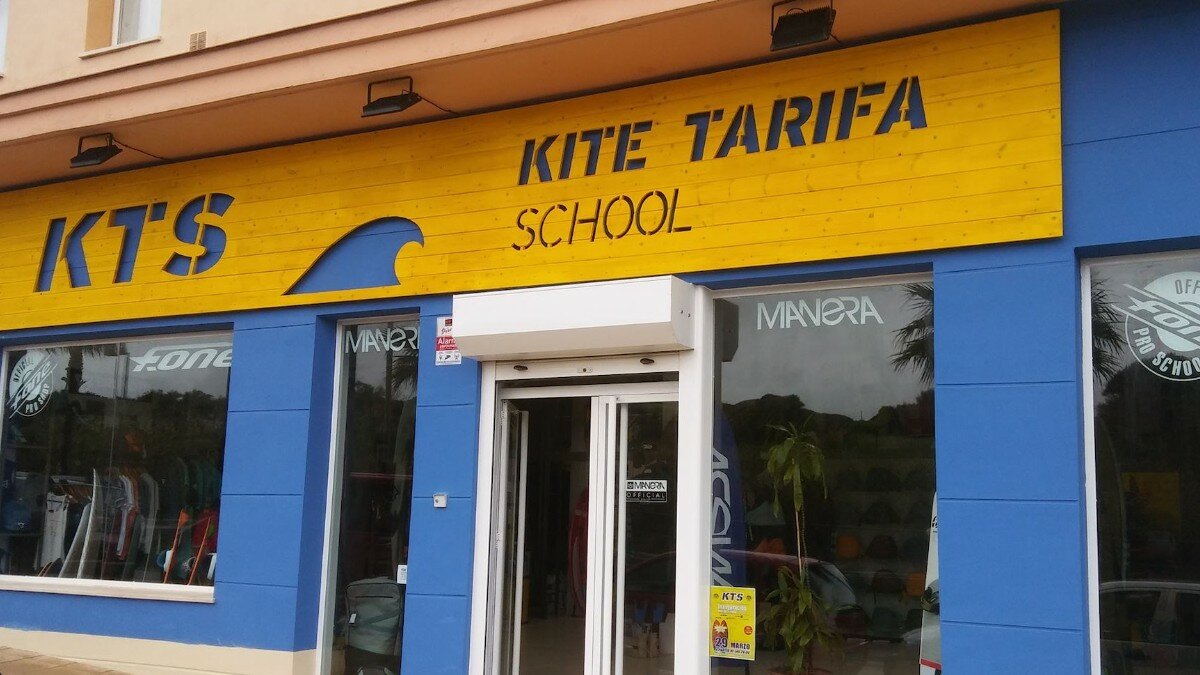
Want to turn your passion for wingfoiling into a career?
Become an IWO Instructor.
The IWO Instructor certification is recognized worldwide, allows you to have your professional skills recognized when you apply for jobs in wingfoil schools and sets you apart from the competition with non-certified instructors.
You can start the IWO Instructor Training Course (ITC) online today.
Author: Marica Moda
Helping Impoverished Communities Thrive
IKO recently launched the philanthropic program "IKO Giving Back."
It aims to have an immediate and long-term impact on a humanitarian level and on the planet.
There are three objectives:
- Sponsoring participants in IKO Professional Courses
- Creating partnerships with nonprofit organizations
- Promoting environmental protection
Starting with kitesurfing, IKO is committed to making a concrete contribution in laying the foundation for the sustainable growth of the sport and protecting the beautiful places where we practice it.
The IKO wants to create a virtuous circle and positive impact on the community, especially the most disadvantaged communities, in the spots where IKO Centers are located.
In addition, the IKO wishes to share and promote a broad-based positive and constructive attitude among kiters, instructors, kitesurfing schools, IKO community members, and all beach users.
Global activities
With the Giving Back Program, the IKO wants to be globally active, taking advantage of its presence in more than 60 countries worldwide with almost 400 IKO Centers.
Its widespread presence and the choice to donate 1% of annual sales enables it to make socially and environmentally lasting changes.
Helping people with economic difficulties in various parts of the world and protecting the nature around us are essential aspects that IKO wants to achieve by creating partnerships with IKO Centers and nonprofit organizations.

1. IKO Professional Courses Sponsorship
Sponsoring members means having a real impact on people and providing training and employment opportunities for disadvantaged communities.
The idea of using kitesurfing not only as a sport but as a tool to improve the living conditions of underprivileged kiters prompted IKO to start this project.
Working with IKO Centers worldwide, the aim is to sponsor low-income kiters.
Helping members struggling in the kitesurfing community allows them to attend an IKO Professional Course, receive free training to become IKO Certified Assistants and Instructors, and build a professional future, breaking the cycle of poverty.
Introducing some IKO-sponsored instructors
Carlos Antonio De La Cruz Romero
Cabarete, Dominican Republic
"I grew up and spent my whole life in Cabarete, Dominican Republic. I have always loved going to the beach. The first time I tried kitesurfing was with a 4-line kite in a school at a hotel on the beach, where the manager allowed me to kitesurf. So I started learning with friends and wanted to become an instructor.
Becoming an IKO instructor changed my life: my hobby became my job. Now I earn more money and can give a better life to my son. Becoming an instructor has always been my dream since I started kitesurfing".
Marcos Antonia Capellán
Cabarete, Dominican Republic
"I'm 19 years old and live with my family in Cabarete, Dominican Republic. In my spare time, I enjoy outdoor activities and sports. I became a kitesurf instructor because I want to share my knowledge and great passion for kitesurfing.
I have greatly improved my teaching techniques by taking the IKO Instructor Course, which will allow me to apply abroad".
Andrè Americo Zivane
Bazaruto Archipelago, Mozambique
"I was born in a poor fishing village in the Bazaruto archipelago in Mozambique and was orphaned at six. I kitesurfed for the first time in 2015 thanks to a tourist; immediately, I knew that kitesurfing would become my life.
I have been teaching kiting for more than five years, and in the summer of 2022, I will be traveling to Italy to attend an Instructor Training Course (ITC) at the IKO Center Kite's Angels. I dream of becoming an IKO Instructor to perfect myself and to be able to give the best to those who want to approach this sport through safer and more disciplined teaching".
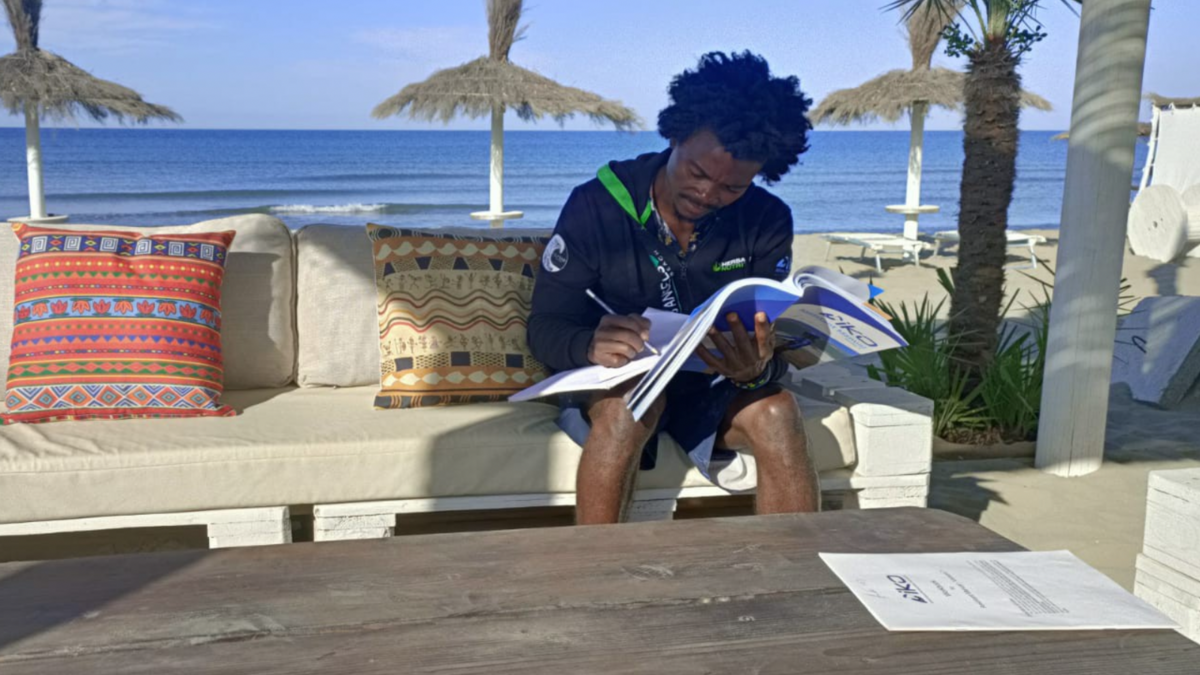
André's feedback after the course:
"I want to thank Kite's Angels Beach and IKO for their generous help that allowed me to realize my dream of becoming an IKO Instructor.
I learned a lot during the Assistant, First Aid, and Instructor courses, and everything was interesting.
Learning how to practice this beautiful sport in the best and safest way was fantastic.
I have had the best time of my life as a person and professional.
I want to thank Examiner Max Piona. He was very professional, and his explanations allowed me to understand and do everything. He also gave me some life advice, so I now have a very open mind with a lot of professional knowledge. In addition, the IKO manuals were helpful during all the courses.
Now that I'm an IKO Instructor, I dream of opening a kitesurfing school in my country, Mozambique, especially where I live, in Vilankulo.
I would love for other young guys with the same dream to become IKO Instructors and for me to put into practice the knowledge I have had the opportunity to learn during the IKO Courses."

Unity is strength:
IKO, Kite's Angels Beach, and the Dr. Christopher Giorgio Spitti (on a humanitarian mission to Mozambique for "Médecins Sans Frontières" and "Fratelli Senza Frontiere ONLUS") have joined forces to create this sponsorship.
Dr. Christopher Giorgio Spitti, who launched the "PHC-Philanthropic Humanitarian Consortium" project, covered the travel costs.
"Fratelli Senza Frontiere ONLUS", in the person of Luana Spitti, took care of the paperwork at the Italian Embassy in Mozambique, obtaining a special permit and covering the expenses for the extended visa.
Lorenzo Leoni, the owner of the IKO Center Kite's Angels Beach in Italy, covered the costs of the ATC and ITC Professional Courses.
IKO covered the costs of registration fees for the ATC and ITC Professional Courses.
Apply to attend a sponsored IKO Professional Course, or tell us who would deserve it
IKO has chosen to sponsor some kiteboarders experiencing financial difficulty.
If you have the characteristics listed below or know someone who does, please write to [email protected].
Tell us your story and send us two reference letters from an IKO Examiner, an Assistant Trainer, an IKO Center owner, a local association, or a nonprofit organization.
You can become an IKO Assistant and Instructor and change your life.
You must:
- Be an experienced kiter
- Be highly motivated
- Live near a kitesurfing spot in a country with a GDP (PPP) per capita of less than US$ 10,000
- Want to work as an IKO Instructor or Assistant after finishing the Professional Course.
Please, help us to give back!
Please also write to us if you know someone who has these characteristics and thinks they deserve to be sponsored.
We will be happy to evaluate your application or that of the person recommended.
2. Nonprofit collaborations
The IKO believes that teamwork makes a difference and that we can leave a positive impact together. That’s why it has decided to support the best nonprofit projects.

Please, help us give back!
Nominate your nonprofit association or an association you know by sending an e-mail to [email protected]. Tell us about the project you would like the IKO to support.
We will evaluate all projects and choose those that can have the most significant and lasting positive impact.
An example of collaboration: InspireDR+IKO
"Swim to survive" is a community-based program that teaches children to swim.
The community of Cabarete lives by the sea and near water sports, yet 80% of the population cannot swim. For this reason, InspireDR, in cooperation with IKOIntl, organized the free "Swim to survive" program, where low-income children could learn to swim and develop comfort in the water.
The IKO was involved in sponsoring fifty children from Cabarete to learn to swim, showing them the importance of maintaining an active and healthy lifestyle, and helping to lower the number of drowning cases.
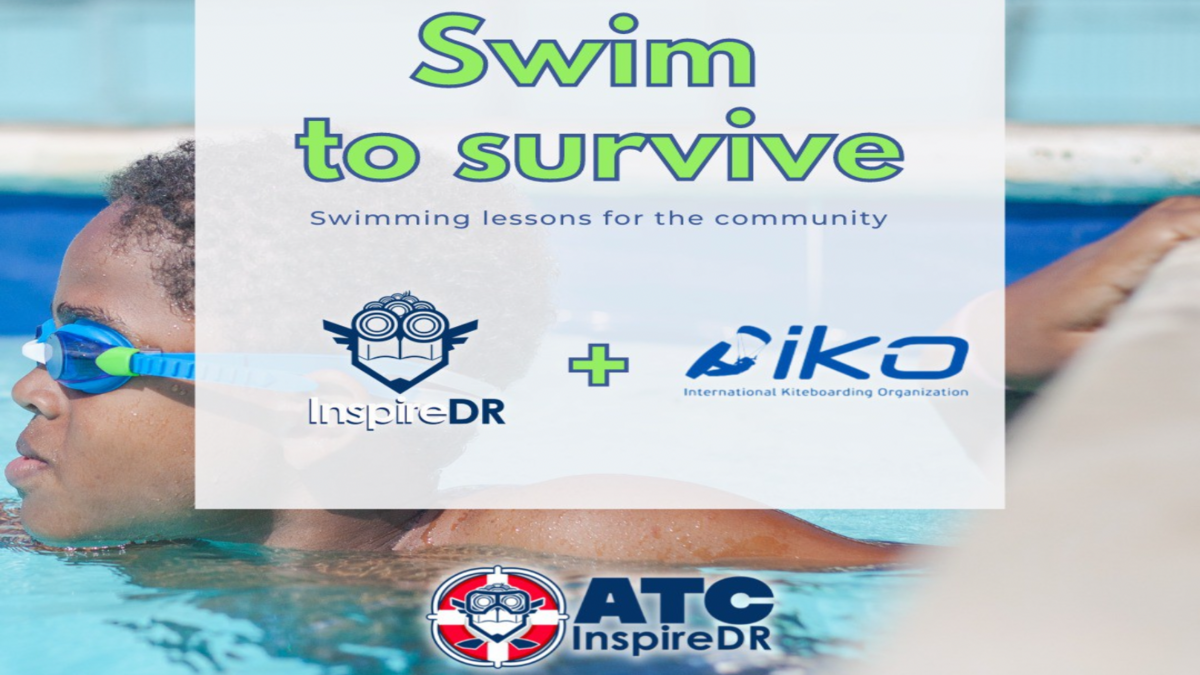
InspireDR's feedback:
"The program has begun. Twenty-one children became familiar with the water for seven weeks and learned basic buoyancy and swimming techniques.
Some children did not want to enter the pool on the first day, but day after day, they felt more comfortable in the water.”

“It was a fun and active group with the first twenty-one children, the new #superswimmers of Cabarete, certified.” -InspireDR

“Thanks to the support of IKOIntl and our instructors, these children will have a safer future. Teaching a child to swim can make the difference between life and death in the event of a water accident. Moreover, swimming is a sport that is fun and healthy." -InspireDR
3. Environmental Management
Every year, 14 million tons of waste end up in our seas; we don’t want to and cannot stand by and watch.
With this initiative, the IKO wants to raise awareness and urge everyone to take action to protect our seas and beaches.
We can make a difference by reducing or eliminating the use of disposable products and actively collaborating in cleaning our seas and beaches.
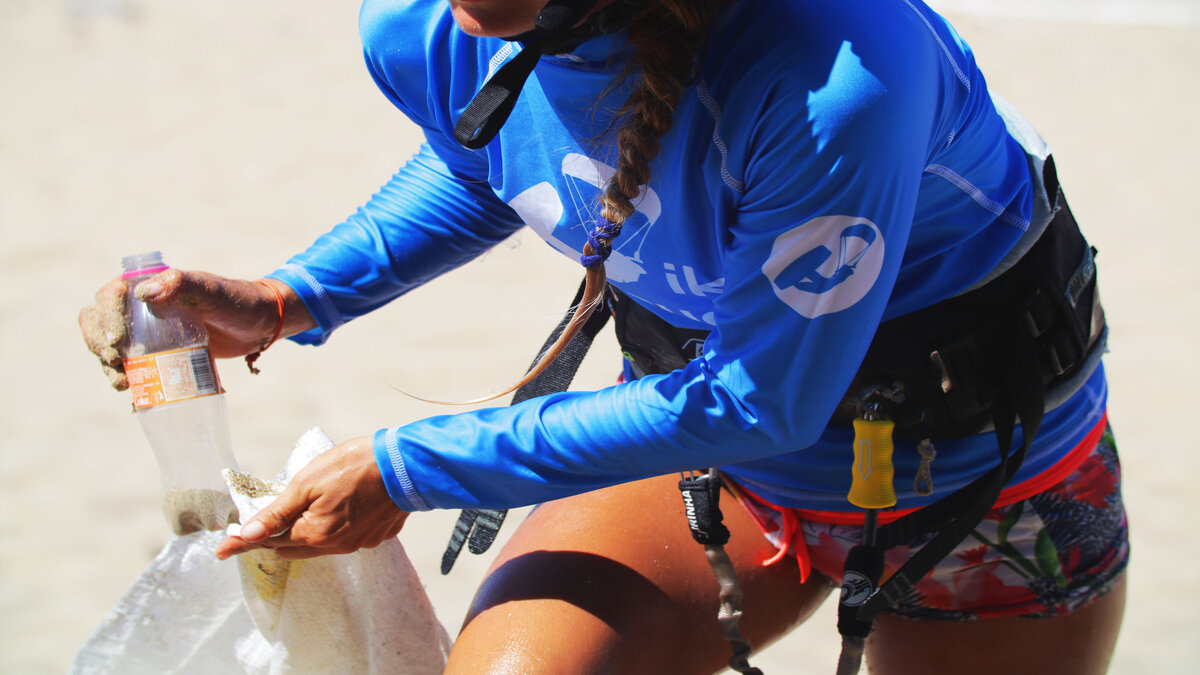
Coastal cleaning
All candidates attending the IKO Assistant and Instructor Courses participate in beach cleaning.

Removing litter from beaches protects marine life, teaches the importance of sustainable tourism, and sets a good example.
Cleaning the seas

Together we can remove waste from the sea, protect the marine ecosystem, and take care of the place where we kitesurf.
Take care of your spot, too, and become a role model.
Together we're stronger!
Write to [email protected] and participate in the IKO Giving Back program.
Together we can grow and improve because together, we are stronger. Giving back helps everyone to grow and progress.

What it’s Like to Be a Kitesurf Instructor
Author: Marica Moda
Life on vacation or a serious profession?
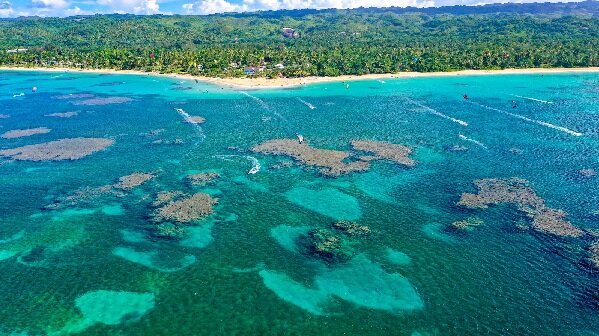
IKO Instructor’s “office”
IKO Instructors are not on vacation but working in the most spectacular office in the world!
Are you thinking of becoming a kitesurfing instructor? Kitesurfing instructors work in beautiful places that are usually vacation destinations.
You will not be on vacation when you become an IKO Instructor, but you will definitely work in an original "office." Your “office” will be the beach, and it will undoubtedly be an enviable office. This characteristic makes this profession unique—it will make you feel "on vacation" even when you are working.
Being a kitesurf instructor is an extraordinary job that, like many other jobs, cannot be done well without a deep passion.
But don't forget that even if you turn your kitesurf passion into your profession, this is still a job.
Profession: IKO Instructor
If you decide to become an IKO Instructor, you make a specific choice: to achieve excellence in teaching an adrenaline sport like kitesurfing.
There are no age limits to becoming an IKO Instructor. There are not only young and energetic IKO Instructors but also instructors with a few more years and some more experience. Both can offer a lesson balanced between fun and safety, always taking into account the uniqueness of the students.
An IKO Instructor is a true professional
As an IKO Instructor, you must have specific characteristics to be a professional: passion, good knowledge, excellent communication skills, empathy, and almost infinite patience; essential qualities to win the trust and attention of the students.
You must have multitasking skills because kitesurf instructors have to do, control, and pay attention to many things simultaneously.
You must be precise, dynamic, technical, and somewhat athletic because you will spend many hours standing and moving.
You must also be a bit of a psychologist because psychology helps to keep the students highly motivated, focused, and with the necessary determination to move forward.
IKO Instructor Lifestyle: the real life of a kitesurfing instructor
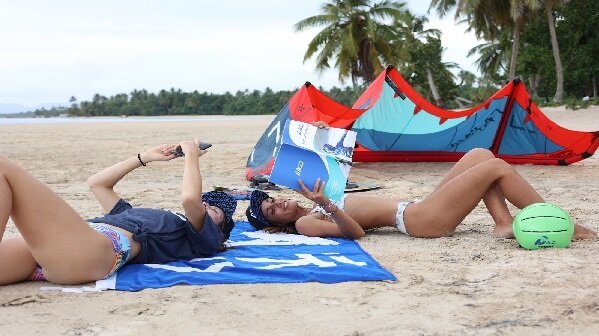
#IKOInstructorLifestyle, an almost perfect lifestyle.
Does an IKO Instructor do kitesurfing?
As an IKO Instructor, you won't spend days kitesurfing; instead, you'll devote every breath of wind to the students.
Your chances of kitesurfing will depend on the organization of the school you work for, the daily lesson hours, and the wind conditions at the spot.
You may have time to kitesurf if the school organizes the lesson plan by giving free hours to instructors. If the school closes early and the wind is still blowing at the end of the day (a desirable way to end the workday), or if you don't have the whole day full of lessons, being able to indulge in a few sessions between classes is a possibility.
These are opportunities for you to have fun and keep fit. But not only that, these are all good opportunities to demonstrate to students how to behave on the beach and in the water because students observe: "monkey see, monkey do."
As an IKO Instructor, you must always be a good role model.
IKO Instructors are always tanned and smiling
Teaching kitesurfing is a beautiful job with many responsibilities and is very physically and mentally demanding. If done professionally, it’s a much more challenging job than it may seem and more satisfying than one might imagine.
Undoubtedly, as an instructor, you will always have an enviable tan because you will spend hours and hours in the sun teaching, preparing, or repairing equipment and keeping the school in order.
But some instructors are a little less tan. Therefore, you should not only think of kitesurfing instructors wearing Bermuda shorts and lycra in the Caribbean Sea. Some instructors teach in icy places and seas, such as in northern Europe, and spend hours wet and buffeted by the freezing wind while wearing shelter jackets, wetsuits, gloves, and hats—even in summer! But they’re always in good spirits, with a big smile and a great desire to teach.
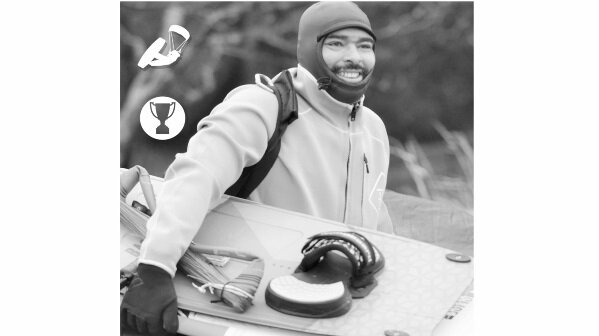
Always smiling IKO Instructor
Negative aspects of this job
The “office" of a kitesurfing instructor is very original, but even the beach also has its downsides.
Being an instructor, you will spend many hours in the wind, buffeted by sand on your legs, and in the hot sun.
If you teach from a boat, once you disembark, you may suffer from "land-sickness," which will make you continue to feel swaying even with your feet on dry land.
If the sky is cloudy, you will have to dress in multiple layers because of the wind. After many hours, this makes you feel cold. The cold will increase if you teach by being in the water, spending many hours wet and in the wind.
You will need to have a good winter wetsuit—or even a dry suit—if you will teach in the winter.
You will need to wear sunglasses to avoid eye damage, a hat to avoid unpleasant heat stroke, lycra to avoid annoying sunburn, a shelter jacket to maintain an acceptable body temperature, and pounds of sunscreen to prevent skin damage.
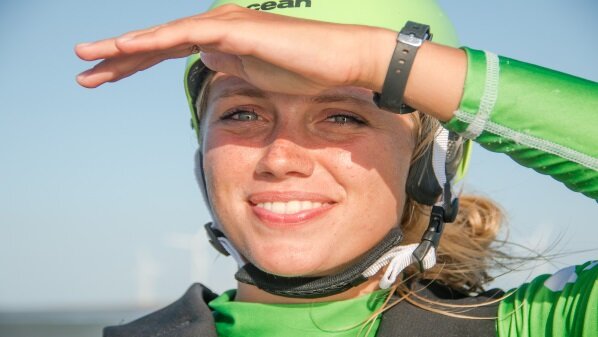
Smiling IKO Instructor
Positive aspects of this job
Many kiters decide to become IKO Instructors to change their lives and create new opportunities for themselves.
The most beautiful "offices" in the world, the positive vibes experienced in this environment, the desire to share one's passion, and the willingness to take on new challenges every day with each student are the right motivations to become an IKO Instructor.
A professional career in IKO
There is no career path like the one offered by IKO, which is dynamic and challenging, starting from Recreational to Trainer Courses,
Anyone can find the perfect role at IKO.
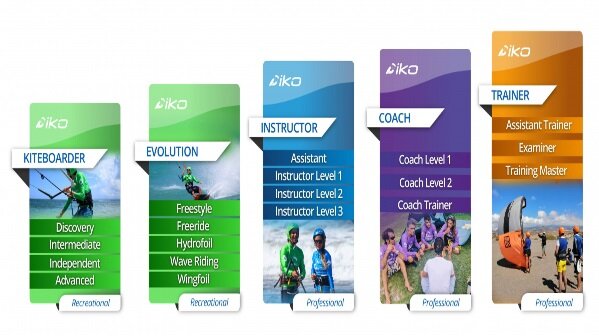
IKO Training path
Kiteboarder Recreational Courses
Discovery - Kiteboarder Level 1
Intermediate - Kiteboarder Level 2
Independent - Kiteboarder Level 3
Advanced - Kiteboarder Level 4
Evolution Recreational Courses
Evolution Freestyle - Kiteboarder Level 5
Evolution Freeride - Kiteboarder Level 5
Evolution Hydrofoil - Kiteboarder Level 5
Evolution Wave Riding - Kiteboarder Level 5
Evolution Wingfoil - Kiteboarder Level 5
Professional Courses
Assistant Training Course (ATC)
Instructor Training Course (ITC)
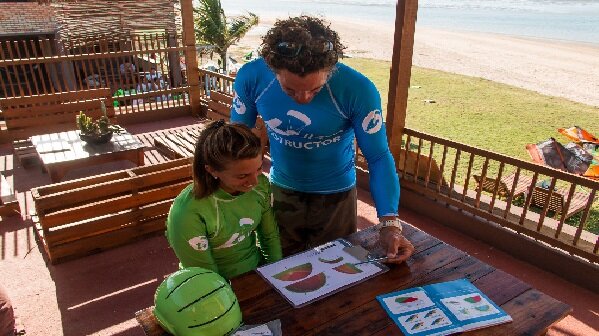
Profession: IKO Instructor
The desired IKO professional qualification for everyone
If your passion for kitesurfing runs deep and you want to turn it into a profession, there are the IKO Professional Courses.
The first step in the IKO professional training path is the Assistant Training Course (ATC). Once you pass the ATC, you can take the Instructor Training Course (ITC) and become a certified IKO Instructor.
IKO Assistant
The Assistant Training Course (ATC) is the first step to improving your level as a kiter, increasing your knowledge, and turning your passion into a unique professional career.
You will not learn to teach, but as an IKO Assistant you will acquire the fundamental concepts of the kitesurf and the primary teaching skills needed to help and support an IKO Instructor during their lessons while also being able to work in IKO Centers around the world.
IKO Instructor
By attending the Instructor Training Course (ITC), you will learn how to achieve excellence in teaching. In addition, as an Instructor Level 1, you will share your passion for kitesurfing and be able to work in all IKO Centers worldwide.
Continuing your career, you can become Instructor Level 2 and Instructor Level 3.
IKO Coach
The Coach is a very inspiring professional figure. Becoming a Coach Level 1 will develop your teaching skills, knowledge, and experience and allow you to train advanced-level kiters.
With this qualification, you can teach Evolution Courses (Freeride, Freestyle, Wave Riding, Hydrofoil, and Wing Foil) and lead IKO Adventures (downwinders, boat safaris, and kite trips).
You can grow further by becoming a Coach Level 2.
A boring daily routine is impossible in the life of an IKO Coach.
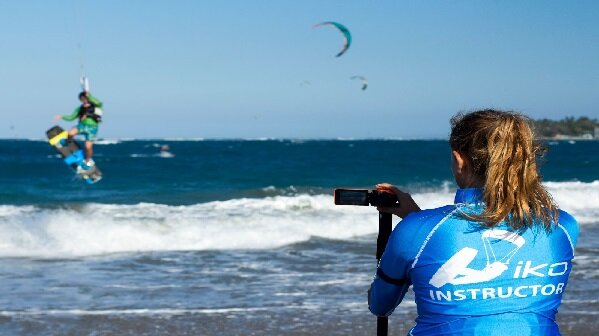
IKO Coach
IKO Assistant Trainer
If the IKO Instructor career path is not enough for you, you can enter the Trainer career path. The training you will need to take during the Assistant Trainer Training Course (ATTC) will be complex and intense but undoubtedly exciting.
IKO Examiner
The role of the Examiner is crucial. As an Examiner, you will promote kitesurfing and engage in high-quality training for future IKO Instructors, achieving great professional satisfaction.
One of the most significant benefits of all IKO professional qualifications is that they allow travel and work, taking the kitesurf passion worldwide!
How does an IKO Instructor find employment?
Once you join the team of IKO professionals, you will have the opportunity to travel and apply for jobs at IKO Centers worldwide, which are looking for new instructors to join their teams.
This opportunity has no seasons or deadlines as long as there is wind and you are willing to work.
Job openings through the IKO website
The IKO website is a convenient professional research tool for IKO Centers and IKO Instructors who wish to travel and work in various windy spots.
In each instructor and center profile, by clicking on JOB, it's possible to view job openings posted by IKO Centers worldwide.
- The IKO Center can enter a description of the team member they are looking for, the tasks and languages required, and what they offer.
- The IKO Instructor can apply for a job at any IKO Center, specifying their personal and professional characteristics, qualifications, previous experience, and the countries they wish to work in or the time they have available.
With this tool, both the Center and the Instructor can get in touch quickly and directly.
Job openings via IKO social media
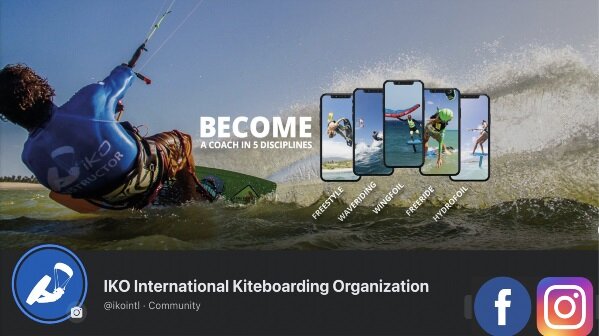
@ikointl - #ikoinstructorlifestyle
IKO's social media is a quick and effective professional search tool. IKO Centers looking for new IKO Instructors to join their team often create posts, reels, or stories on their profiles and mention or tag @Ikointl so that IKO can share them.
https://www.facebook.com/ikointl
https://www.instagram.com/ikointl/
https://www.facebook.com/groups/ikointl
Job offers through "international word of mouth"
If you want to pursue a professional career in IKO, you must always work well, thoughtfully, and professionally.
Before hiring a new instructor, many kitesurf school owners ask for references from IKO Centers where they have worked. So, as in any other job, a bad reputation will limit work opportunities.
By traveling and working in various kitesurfing spots, you'll be able to meet and get to know many people and gain many contacts. Through these, you'll have the opportunity to move and work in different places, even every season. The world of kitesurfing is a "small world," and always working well will open all doors in every spot in the world.
Online: IKO Curriculum Vitae
Part of your job as an IKO Instructor is to certify your students at the end of classes, attesting to their level. Certifications serve the student and help certify your career as an instructor.
The IKO Centers you have worked for, the number of students, and the number of class hours you have taught will create an accurate "IKO Curriculum Vitae."
Your professional history as an IKO Instructor will allow other IKO Centers to evaluate your candidacy and professional experience.
Online interview with an IKO Center
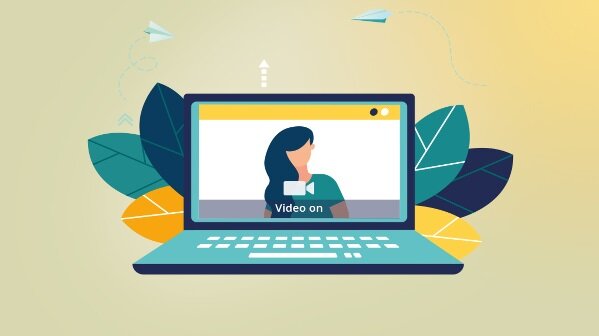
Online interview
Once you apply for a job at an IKO Center, you will proceed as you would with any other job: an interview.
The interview usually takes place via a video or a phone call, allowing the two parties to know each other better and evaluate each other.
Agreements: working conditions, accommodation, transportation
During the interview, the school will propose the working conditions like working hours, tasks to be performed at the school, and the benefits offered.
The benefits offered may be, in addition to the fixed and/or commissioned salary:
- lodging
- transportation (e.g., a bicycle or a scooter)
- freshwater to drink (a benefit not to be underestimated in hot spots)
- hot drinks (fundamental in cold spots)
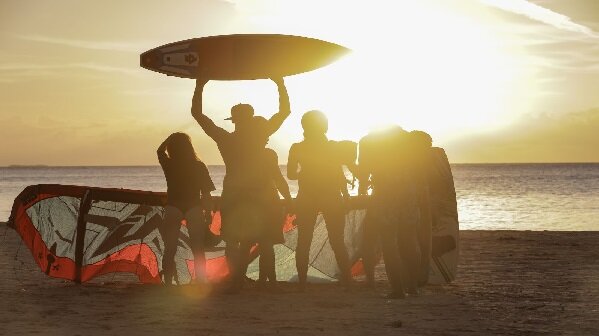
IKO Team
Why choose to do this job
An IKO Instructor teaches excellently, being part of a large and dynamic community.
The life of an IKO Instructor is anything but boring, and the opportunity for fun and fulfilling work is unique, as you have the luxury of working in the most beautiful and windy "offices" worldwide.
There are no professions as beautiful as this one, but don't just call it a job, because it's an authentic lifestyle.
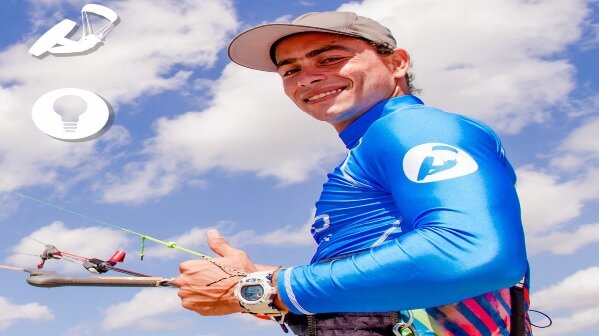
#IKOLifestyle
- Teach kiteboarding to a maximum ratio of 6 students with a maximum of 3 kites flying at any onetime when working with 1 IKO Assistant. If working alone, the ratio is the same as InstructorLevel 2.
- Teach kiteboarding to a maximum ratio of 8 students with a maximum of 4 kites flying at any onetime when working with 2 IKO Assistants.
- Access the Assistant Trainer Course,
- Work at IKO Affiliated Centers,
- Access the online job list,
- Post seeking employment ads to the online job list,
- Post personal profile information viewable on the general public website,
- Receive customer feedback that results in an international instructor ranking.
- Be an active Instructor level 2,
- Have been validated as Instructor Level 2 for at least 1 year,
- Have taught a minimum of 125 students and 1000 hours in total (including logged hours as Instructor level 1 and 2),
- Pass the online exam to become Instructor Level 3 with a minimum score of 70%.
- Teach 4 students with 2 kites flying at the same time,
- Work at IKO Affiliated Centers,
- Access the online job list,
- Post seeking employment ads to the online job list,
- Post personal profile information viewable on the general public website,
- Receive customer feedback that results in an international instructor ranking.
- Be an Instructor level 1for a minimum of 1 year
- Have taught and registered at least 35 students with the IKO totaling at least 280 hours of teaching.
Coach Trainers train and certify new IKO Coaches. To be eligible to become a Coach Trainer you must be a certified Coach Level 2, run at least 4 Evolution Clinics with a minimum of 20 participants or have certified 40 Level 5 students. You must also be at least 24 years old and have been validated for all the skills of all the Evolution categories.
IKO Coaches provide both live coaching and video coaching. Live coaching takes place on the spot where you provide feedback to students immediately after they perform tricks. Video coaching is when you record your student doing tricks and then review the footage with your student to give them feedback and tips. A smartphone or camera is therefore necessary to be an IKO Coach.
You need a smartphone (with a video stabilization app) or a waterproof video camera with 8x to 20x zoom (Go Pros aren’t permitted), a monopod or tripod, a helmet, an impact vest, a kite and a board. You’ll use this equipment during your coach course and to coach students.
To get certified as a Coach Level 2, you must attend the course and pass an evaluation at an IKO Center which takes place over three days, depending on the weather.
Review the latest Assistant and Instructor Manuals and study each trick in the discipline you are certified as Coach Level 1 - Freeride, Freestyle, Wave Riding, Hydrofoil and Wing Foil. The tricks are listed in the Appendices of the Coach Level 1 Manual. Revisit your first aid and CPR course material. Study the Coach Level 2 Manual (which you will receive after enrolling in the course). Practice filming riders with your smartphone or your camera so that you can give students feedback. Ride as much as you can to improve your riding skills. A great Coach is a great rider.
| School Team member at iko center | Number of students in evolution course or participants (independent kiter) on downwinder, boat trip and/or kite trip |
|---|---|
| Coach L1 alone | 4 |
| Coach L1 + IKO Assistant | 6 |
| Coach L1 + boat | 10 |
| Coach L1 + IKO Assistant + boat | 12 |
| Coach L2 alone | 6 |
| Coach L2 + IKO Assistant | 8 |
| Coach L2 + boat | 12 |
| Coach L2 + IKO Assistant + boat | 14 |
| Coach Trainer alone | 8 |
| Coach Trainer + IKO Assistant | 10 |
| Coach Trainer + boat | 14 |
| Coach Trainer + IKO Assistant + boat | 16 |
Once you become a certified Coach Level 2, up to six students can attend your Evolution Clinic. If you have a certified IKO Assistant working with you, you can have up to eight students.
Both Evolution Courses and Clinics train riders in the Evolution disciplines - wing foil, hydrofoil, freestyle, freeride and wave riding.
Evolution Courses usually take place over several hours and are taught by Level 1 Coaches (only one student at a time) or Level 2 Coaches (more than one student at a time).
Evolution Clinics take place over five days at an IKO Center and can only be run by Level 2 Coaches.
As a Coach Level 2, you’ll be able to run Evolution Clinics, teach Evolution Courses with more than one student at a time and lead IKO Adventures with more participants.
The course includes 3 days of training at an IKO Center (or more depending on the weather), the Coach Level 2 Manual and a Coach Level 2 Certificate after you pass the course.
You must be a certified IKO Coach Level 1 with active IKO membership.
Yes, the $150 Coach Course fee allows you to get certified in as many Evolution Course disciplines as you want. You can get certified to teach up to five disciplines. The disciplines are Freeride, Freestyle, Wave Riding, Hydrofoil and Wing Foil.
Access Teaching Materials
Once you’ve read the Coach Level 1 Manual and Appendixes, please follow these steps:
Step 1 – Online Riding Skills Demonstration
Upload a video of your skills in each of the Evolution Course disciplines you want to be certified, following instructions from the Coach Level 1 Manual. If you only upload freestyle and freeride you will only be certified for these two disciplines. In the future if you want to become a wave riding instructor, you’ll still have this possibility.
In order for your video(s) to be reviewed by the Training Department, the video(s) must meet the criteria above.
If your skills are not demonstrated clearly in the video because of poor quality recording (bad angle, too far, low wind, etc.) the video will be rejected.
If the Training Department rejects a video because your skills are not adequate, you will have to practice again and resubmit your video(s).
Step 2 - Online Coach Level 1 Exam
Once you’ve studied the manual and corresponding appendixes, you can take the online exam related to the Evolution Course discipline you want to certify. You must pass the exam with a score of at least 75%.
Yes, we’re in the process of creating the Coach Level 2 Course. Once you’ve passed the IKO Coach Level 1 Course, you’ll be eligible to take the Coach Level 2 Course to get an additional credential and advance your career.
Congratulations! You’re a certified IKO Kitesurf Coach Level 1. You can download your certificate through your IKO profile.
If you fail because you don’t have the required riding level, continue practicing. We’ll let you know what your weakest skills are and what needs to be improved. After you practice, you can submit new footage.
If you failed because your video quality was poor, resubmit your footage.
After you record the videos, you upload the footage to your IKO profile so we can review it. Once the footage has been reviewed, we’ll contact you to let you know whether or not you passed. You must be recognizable in the video and the footage must be high quality and stabilized for it to be accepted. If your skills are not demonstrated clearly in the video because of poor quality recording (bad angle, water on the lens, etc.) the video will be rejected.
You need a smartphone (with a video stabilization app) or a waterproof video camera with 8x to 20x zoom (Go Pros are not allowed), a monopod or tripod, a helmet, an impact vest, a kite and a board. This equipment is used for online skills demonstrations and student coaching.
To lead IKO Adventures, you must be able to do all of the skills mentioned in the manual in the Freeride Evolution Course.
This is the first step in the course. Once you’ve submitted your payment and enrolled in the course, you must send us videos of yourself doing all of the tricks mentioned in the Evolution Course discipline/s you want to teach. Our training department will then contact you to confirm you have the riding level to become a coach.
Most candidates are able to complete both steps and finish the course in a few weeks. However, the course may take longer if you have to redo any of the steps.
You must complete two steps to get your Coach Level 1 certificate. Step one is a riding skills demonstration and step two is an exam. Both are completed online.
Review the latest Assistant and Instructor Manuals and learn the new certification standards for the Level 5 – Evolution Course/s in the discipline you want to teach. Study each trick and know the lesson plan and associated tips. Revisit your first aid and CPR course material. Practice and be sure you can demonstrate all the Level 4 - Advanced tricks and all tricks in at least one of the Level 5 - Evolution disciplines (Freeride, Freestyle, Wave Riding, Hydrofoil and Wing Foil). Someone must film you demonstrating each trick in the discipline you want to teach. You can get certified to teach in as many evolution disciplines as you want.
Once you pass the course, you’ll be a certified Coach Level 1. As a Coach Level 1, you’ll be able to teach one student at a time and certify kiters who take Evolution Courses in the discipline you have been certified for. You’ll also be able to lead IKO Adventures - downwinders, boat trips and kite trips.
Once you’ve booked your Coach Level 1 online course, you’ll have access to a PDF copy of the course manual and one appendix per Evolution Course category with all the details of the tricks to help you get ready. You’ll get your certificate after you pass the course.
You must be a certified IKO Instructor (Level 1 or above) with active IKO membership and demonstrate in the video the following Level 1 to 4 Safety procedures and the following tricks in at least one of the Evolution Courses - Freeride, Freestyle, Wave Riding, Hydrofoil and/or Wing Foil.
Level 1 to 4 Safety Procedures:
Self-rescue
Self-launching
Self-landing
Level 5 – Freeride (to be a certified Freeride Coach)
¨ Ride blind
¨ Transition with back-roll
¨ Jump with various grabs
¨ Dark slide
¨ Downloop jibe
Level 5 – Freestyle (to be a certified Freestyle Coach)
¨ Transition with frontroll and grab
¨ Unhooked railey
¨ Surface handle pass
¨ Jump with kite-loop and land with down-loop
¨ Unhooked jump with grab
Level 5 – Wave Riding (to be a certified Wave Riding Coach)
¨ Jibe strapless
¨ Tack strapless
¨ Floater strapless
¨ Snap back strapless
Level 5 – Hydrofoil (to be a certified Hydrofoil Coach)
¨ Riding in any direction
¨ Jibe
¨ Tack
¨ Toeside riding
Level 5 – Wing Foil (to be a certified Wing Foil Coach)
¨ Ride upwind/downwind
¨ Foot change
¨ Jibes
¨ Tacks
Catching the swell
No, you must complete both Module 1 and Module 2 to be a certified IKO Assistant.
We recommend you rewatch the Module 1 videos and complete the quizzes before attending Module 2 In-Person Training. The videos and quizzes will prepare you for in-person training.
You must complete in-person training within 12 months of enrolling in Module 1 eLearning.
The in-person training fee is determined by the IKO Center. This is paid directly to the IKO Center. You can check pricing on the training calendar.
Yes, but we recommend completing Module 1 so you’re prepared for Module 2. Module 1 is a series of easy-to-follow videos and quizzes that you can complete from the comfort of your home. The videos and quizzes are there to prepare you for Module 2 In-Person training.
Yes, you can book in-person training at an IKO Center as soon as you’ve enrolled in the course and submitted your payment for Module 1.
The assessment is there simply to improve your knowledge. You can take the assessment several times. If you don't pass the assessment online during Module 1, you can take it again during Module 2 In-Person Training at an IKO Cente.
Module 1 is there to prepare you for Module 2 In-Person Training. If you need clarification or have questions, write them down. Anything that was not clear to you will be clarified by your Assistant Trainer during in-person training.
The quizzes are there simply to help you assess your knowledge. If you fail one of them, it is advised to rewatch the video.
Yes, if you want you can only do Module 1 to improve your general kitesurfing knowledge. You don’t have to do Module 2 In-Person Training, unless you want to.
Most people are able to finish Module 1 in 12 hours over several days.
Submit your payment to access eLearning materials through your IKO account.
You begin the course by enrolling in Module 1 eLearning which you can complete from the comfort of your home.
There aren’t any prerequisites for Module 1 eLearning. Anyone can do the first module. But to attend Module 2 In-Person Training, you must be at least 16 years old and have a riding level equivalent to IKO Kiteboarder Level 4 - Advanced.
The course has two modules. The first module is eLearning and completed at home. The second module is in-person training at an IKO Center.
Kiting is constantly growing and evolving. New disciplines emerge, equipment improves, spots get discovered and teaching techniques are enhanced.
We recently updated the IKO Kitesurf Instructor Manual to include the latest knowledge and experience from our elite trainers worldwide.
IKO Kitesurf Instructor Manual 7.0 Now Available
Concise Lesson Plans
Speed up the learning process and make lessons more enjoyable
Emphasis on ‘Guided Discovery’
Students progress quickly with hands-on learning
Focus on Students’ Mental States
Ensure students feel good and have fun while learning
Improved Readability
New graphics and easier to understand concepts
If you’re an IKO certified instructor with active membership, get a copy of the new manual by logging in to your account.
IKO met up with Stephan Zaat, IKO Examiner and owner of IKO Center Kitesafe to discuss how kitesurfing changed his life and whether COVID-19 has had a large impact on his business. Read all about it:
How did you get into kitesurfing?
Stephan: In 2001, a good friend of mine who was a windsurfer was in Scheveningen, the Netherlands and he saw some people kitesurfing. He said “Oh my God, Stephan, we have to do this!” It then took us about a year to get a lesson, on the right day with the exact right conditions but, we started. It then took us about a year to go upwind and do our first jumps but we were stoked! We were on the beach every day, every weekend, driving back and forth to the beach. Even with no wind, you know how it goes, and it was great. I’ve been kiting ever since.
When did you decide to start pursuing kiteboarding professionally?
Stephan: After kiting for about a year, I thought it would be interesting to teach some lessons, just on the side as I also had a normal office job. I then went on holiday to the Dutch Caribbean, to Curacao and Bonaire. On Bonaire we met a school owner and I told him “hey, this is where I want to be.” So then I went back home, cancelled my job and six months later I was back there teaching! This was in 2004.
At this point I was just teaching for the school. Or well, at this point in time you’d have a leaking boat, 3 kites and you could call it a school. From there onwards, we started doing things more professionally. We did our IKO courses and started hiring people. We got more boats, more kites and so the school started to grow. I was there for about 3 years, living the life in the Caribbean!
And then you returned to the Netherlands and started your own school?
Stephan: Yes, in 2008 I returned to the Netherlands and started Kitesafe. I based the school around Amsterdam, teaching from a van so it would be a mobile school. In 2008 I also started teaching the IKO Instructor Level 1 course as an Examiner and I have been doing that ever since then for almost 12 years now.
Did you experience any issues when you were setting up your school or getting your Examiner’s license?
Stephan: From a school point of view in the Netherlands it’s quite easy to set up because there are no licenses necessary. Although it is becoming much more professional now, from a government point of view, anyone could really start his own school. In the Dutch Antilles it was a different story as there were many issues with the local nature parks and windsurfing schools so we really had to get a license to be able to teach there.
As for becoming an Examiner, I was on a fast track. I did my IKO Instructor Level 1 course in 2005 and then attained my Examiner’s license in 2007 which was exactly within the 2 years that was required at the time. I did all my hours, taught all the students required and there were forms to fill out by hand instead of online like nowadays but I made it and within 2 years I was an Examiner!
How has this affected your life?
Stephan: I think the biggest change was when I started teaching. Going from an office job to a beach job, that completely changed my life around. In the Netherlands, it’s not possible to do this on a full-time basis but if you have places where it’s always windy such as Brazil or in the Caribbean, you can really make a full-time job out of this quite easily. When you’re an Examiner, you’re on a different level because you can run these courses. This can even be done on the edges of the seasons or you can go abroad and do these courses in other places.
It made me look at kiteboarding from a different perspective. In some ways, I would say even a little bit negative because when you go to another place, you’re always looking at how the instructors are teaching and whether they’re doing it according to the IKO Standards. So even on holiday, you’re still working, your brain doesn’t turn off.
Have you been affected by COVID-19?
Stephan: Yes, so in March, we normally start the IKO courses here. Unfortunately, the day after the lockdown started, we had a course planned. So we had to cancel everything for the first month. But luckily in the Netherlands, they've been quite lenient and coming back to somewhat regular life relatively quickly. So, within about five weeks, we were able to start up and doing IKO courses again. We did our first Assistant course the day after the lockdown opened up and we’ve had a lot of people asking for the courses. We’re in the lucky position that we are an outside sports organization and we can operate as the inside sports schools are still closed.
Are there any implications for your school or any special measures that you're taking?
Stephan: Yes, we started out with a protocol for all kitesurfers coming for classes where we made sure the students were healthy, we had a waiver that all students had to sign and we were teaching with special leashes in the back on the student to the Instructor (with safety leash to kite on the front) to keep some more distance. Especially social distancing is important, it looks like kiteboarding classes in small groups are becoming more acceptable again now but we still keep our distance. It’s also good that some research has been done already. In kiteboarding, we are also generally working with younger people who are not in the risk group which is also an advantage. Overall, I think the kiteboarding business in the Netherlands is relatively unscathed compared to businesses to do with larger groups and crowds.
Do you have any advice for your colleagues?
Stephan: I don’t think we are doing things that differently but one of the main things is that we should examine the way outsiders look at us. Whether it’s government officials or just people passing by who are still in lockdown or at least not allowed to visit certain family members. We also need to show them that social distancing is something we can do and that we are serious about doing so and don’t fall back into our old habits easily.
Thank you for taking the time to have a chat with us, Stephan. It’s been interesting to get a peek into your journey in the professional world of kiteboarding. Did he inspire you as well? Find out more about becoming an Instructor yourself or setting up your own IKO Center.
The wind window is the area where the kite can fly. On its edge, the kite generates its minimal power, because it only receives the true wind. It is also where we use the kite clock as a reference for teaching. Positions 9 and 3 o'clock are also called launching and landing positions. 12 o’clock can be called the Zenith too. On the center of the wind window, the kite will be able to accelerate and create an “induced wind” which associated with the “true wind” will be called “apparent wind”. This is where the kite can generate its maximum power.
This infographic and others are available for free in the gallery section of the IKO App! Download the app today to access these resources (App Store or Google Play Store).
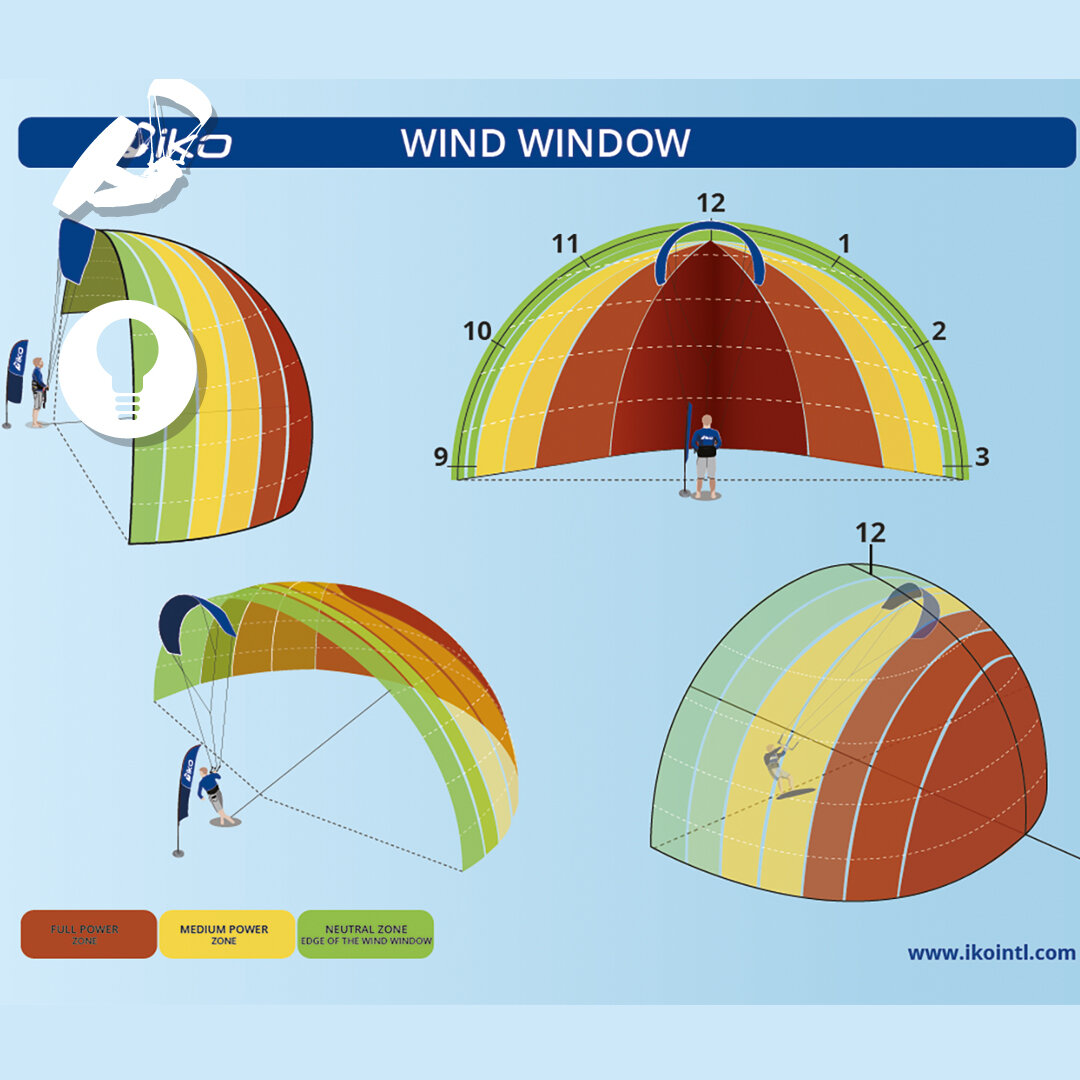
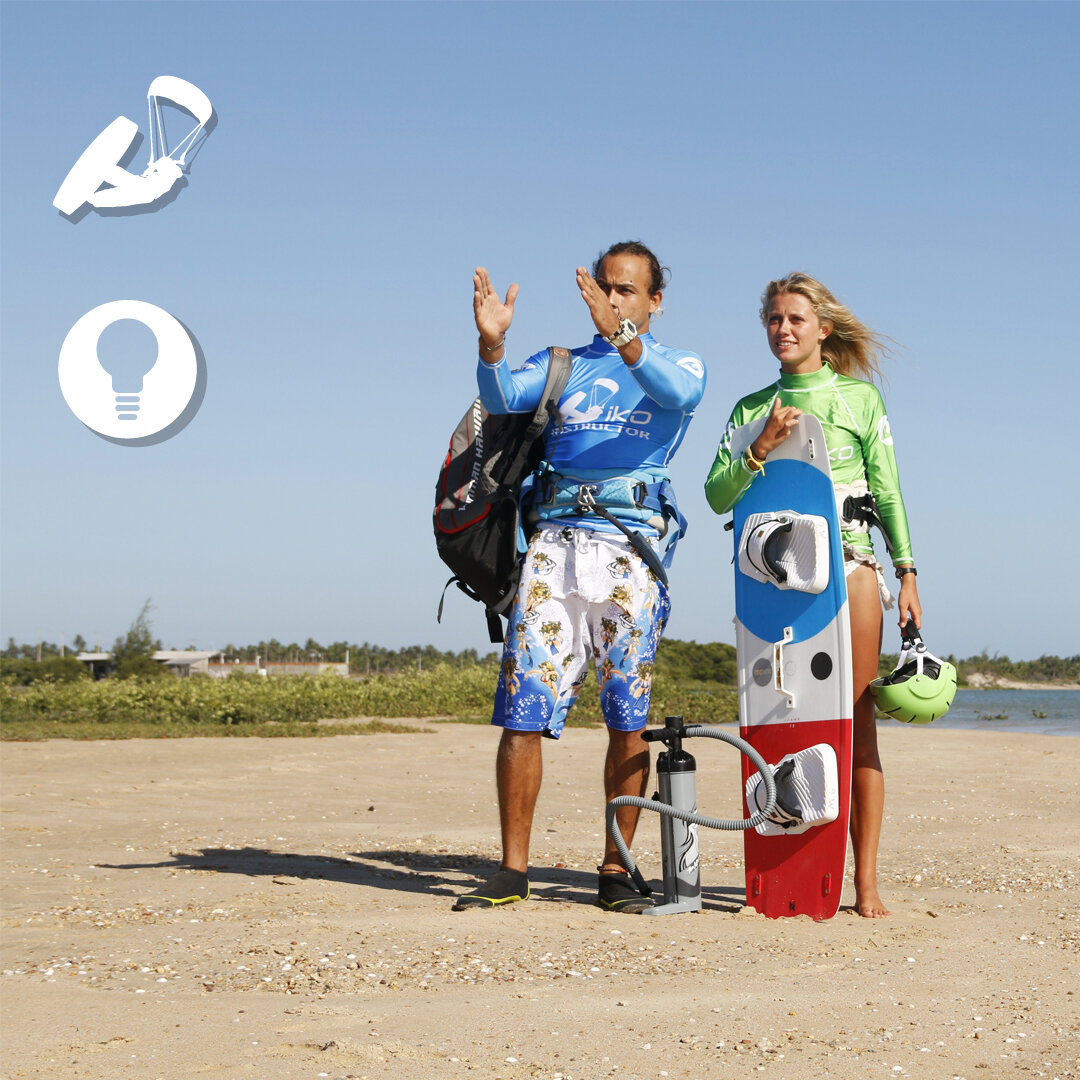
The wind is overlooked. People think of the wind just as an invisible force of Mother Nature and nothing more, yet it is an important element when kiteboarding. Telling the direction of the wind in addition to its speed is an essentially factor when accessing a spot. There are three different and common wind directions: on-shore, side-shore and off-shore winds. These different wind directions can factor into your SEA assessment.
To tell where the wind is coming from- extend your arms out and turn until you feel the wind in your face and both ears. Once you feel the wind in both ears, join your hands together and this direction where you are pointing is where the wind is coming from. Using the wind as your main reference compared to physical objects like the shore/trees/rocks is that, the kite will always launch/land and react in the same angle to the wind while physical objects will not.
When setting up at a new spot remember to do a SEA assessment: Spot Environment Activity; a quick kite hack that allows you to assess your surroundings. Helping you pick the best place to set up and get into the water. When setting up your lines, do them downwind to avoid danger when launching. It is always recommended to check your lines and your safety system before going out. It is especially important to connect your leash to the front part of the harness for easy emergency quick release, making sure you have a line cutter and are wearing an impact vest and a helmet. If it is possible to start off more upwind in a spot that will help you have more space downwind for your first runs in the new location to safely orient yourself. The more safety measures you take, the less chance it is to have an accident.
Armed with this knowledge - which wind direction should you avoid kiteboarding especially if alone and why?
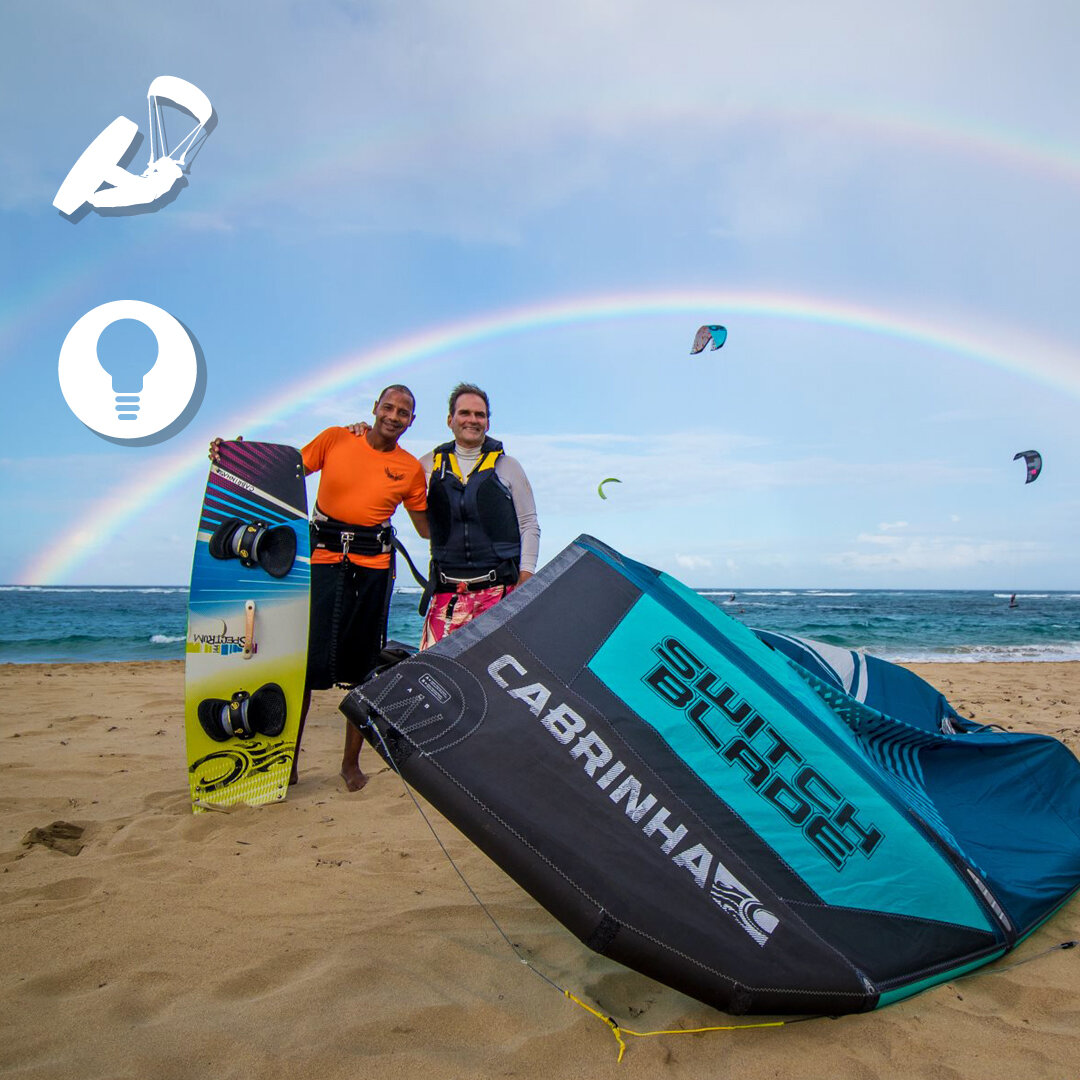
No matter how fast or slow we progressed in our kitesurfing, at some point we will eventually slow down. We get to a point where we are not progressing as fast as we used to and this is exactly the moment where we plateau.
Most people when they learn to kiteboard, use an Instructor up until they become independent. They take the initial course package and once they can ride upwind and/or manage themselves they go off all on their own. At this point, those that are ambitious start testing and pushing their limits to begin developing their skills whilst some others take their time and just enjoy the beauty in the basics.
It was rare before though now it is becoming more common for an intermediate kiter to get 1 on 1 coaching or join a clinic to improve their level. As kiters we often forget the power of getting coached. All the greats of any sport has a coach by their side and mentor to help. A coach will be especially useful for when you have slowed down or plateaued as they will help invigorate and guide you once again to improve in any direction you wish.
To answer the question of if one should seek out coaching even if they are at an intermediate kitesurfing level? The answer is a definite yes! We all have room for improvement and/or plateau at some point which is why it is good to get some coaching to challenge and push ourselves to stay excited about the sport we love.
What is your level and have you ever considered getting coached? Would you prefer getting coached one on one or within a group clinic environment?
Prices of kiteboarding packages can vary upon center and geographical location. You can expect to pay anywhere between $300-$900 USD for a complete course from zero to independent kiteboarder.
Yes, absolutely. Kiteboarding is an extreme sport with a technical learning curve. Similar to scuba diving or flying a paraglider, you don’t want to take unnecessary risks while learning and get hurt. Many of the techniques are counter-intuitive and best learned with a professional instructor. Lessons will shorten your learning time and keep you much safer in the process of becoming an independent kiteboarder. Kiting, like driving, can be dangerous if you don’t know how or the rules- learning the basic skills and rules to the sport makes it much safer. The advantage of getting lessons is that you can progress from newbie to independent kiteboarder in a timely and safe manner.
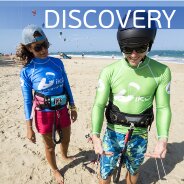
Are you an Instructor Level 3 and have at least 24 years old? You enjoy teaching kiteboarding and are looking for a way to increase your revenue with your passion?
The IKO is looking for the next generation of Assistant Trainers. All Instructors Level 3 can apply to an Assistant Trainer Training Course (ATTC).
Benefits
- Run IKO Assistant Training Course (ATC) with up to 8 candidates
-
Earn up to USD 1,720 in 5 days or USD 215 per candidate
-
Apply to become Examiner (once you have run 10 ATC with a total of at least 40 candidates)
-
Access to open job listings on the IKO Website
-
Post seeking employment ads viewable to IKO Centers
-
Post personal profile info online, which is viewable via the general public website
-
Receive customer feedback that results in an international instructor ranking
Prerequisites
- Be at least 24 years old.
- Be an Instructor Level 3 for a minimum of one year and teach actively.
- Teach a minimum of 150 students and log at least 1,200 hours of teaching time, including those logged as an Instructor L1, L2, and L3.
- Must have passed a First Aid and CPR course in the past two years
- Have 10 points in your Pro account at the time of candidature and during training.
- Have valid professional insurance for kitesurfing.
- Send a one-hour video of yourself teaching a Discovery course (including self-landing).
- Pass the ATC Module 1 final exam one month prior to the candidature with a minimum score of 95%.
- Be approved for ATTC by the IKO Office. Non-approved ATTC will be void.
- ATTC 1: Follow one ATC as an observer (confirmed by the Assistant Trainer) after being approved by the IKO Office. (Non-approved training will be void.)
- Pass the ATTC 2 and 3 with an Examiner (in the event of failure, ATTC 3 candidates will have to pass an ATTC 4). The failure to ATTC 4 will lead to a re-evaluation of the candidature as Assistant Trainer by the Training and Quality Department.
Procedure
- Candidates who meet all the pre-requisites MUST contact the IKO Office to receive details about the course. The IKO Office will then confirm (or not) the course to the candidate and Examiner.
- Candidates self-evaluate and decide to participate in the course. If they do not feel ready, it is advised to postpone the course.
Training Procedure
Once the IKO Head Office has approved your candidature, the Assistant Trainer candidate must complete at least three ATTCs (Assistant Trainer Training Course; ATTC 1 can be done with an Assistant Trainer or an Examiner. The ATTC 2 and 3 must be done with an Examiner).
ATTC 1 – Observation week
During the ATTC 1, the candidate will observe the ATC run by an Assistant Trainer or an Examiner. The point of this week is to refresh their knowledge, ask the Assistant Trainer as many questions as possible on tricks and tips to run an ATC (during breaks so as not to disturb the ATC), and to help and assist the Assistant Trainer with the group—especially during practical exercises.
The minimum number of Assistant candidates to confirm an ATTC 1 is four.
Once the ATTC 1 is completed, the Assistant Trainer candidate must attend the ATTC 2 within one year or the ATTC 1 will be void and must redone to be valid.
ATTC 2
During ATTC 2 (during which the candidate will be trained only with an Examiner), the candidate will be required to become more hands-on than they were in ATTC 1. They must run some parts of the ATC themselves to build confidence as a future Assistant Trainer. They will coordinate with the Examiner regarding which parts they will run and which parts they still prefer to observe. During breaks and in the evening, the Examiner will help them prepare for the next part of the ATC.
The minimum number of Assistant candidates to confirm an ATTC 2 is five.
ATTC 3
This is the last step of the certification. The Examiner and Assistant Trainer candidate will prepare the lessons for the following day of the ATC in the mornings and evenings before and after each lesson. The objective is to ensure that the Assistant Trainer candidate runs the ATC on his own with the Examiner shadowing. The ATC must be run according to the IKO Standards in order for candidates to be certified.
The minimum number of Assistant candidates to confirm an ATTC 3 is five.
If the candidate fails the ATTC 3, they must attend an ATTC 4 to be certified.
Important note: the maximum time between two Assistant Trainer Training Courses (ATTC) is one year, no matter if it is ATTC 1, 2, 3 or 4. If more than one year has passed, the Assistant Trainer candidate will have to restart the course from the beginning.
Training Cost
The ATTC 1 is free. The cost of the ATTC 2 and 3 (and eventually 4) is $700 per ATTC. This includes $200 of IKO fees (for each ATTC) that must be paid as soon as the ATTC is confirmed with the organizer and Examiner, so candidates can get access to the course content.
-
Candidates who meet all the pre-requisites contact the IKO Office which will provide details about the course
- Candidates self-evaluate and decide to participate in the course. If they do not feel ready, it is advised to postpone the course.
After taking this course, you will be proficient in all of the following:
|
Directional or twin tip
|
21
|
Wave pattern rhythm / rip current: analysis
|
|
|
22
|
Pass the shore break
|
|
|
23
|
Pass the shore break with directional board
|
|
|
24
|
Getting off the water with shore break
|
|
|
25
|
S turns on flat water
|
|
|
26
|
Jibe a directional board
|
|
|
27
|
Jumping on a wave
|
|
|
28
|
Bottom turn / off the lip
|
|
|
29
|
Riding on waves over 1m (all previous skills)
|
|
|
30
|
Floater
|
|
|
31
|
Snap back
|
|
|
32
|
Tack (directional)
|
|
|
33
|
Riding on waves over 2m (all previous skills)
|
|
|
34
|
Doing a downwinder on waves
|
|
|
|
|
|
Strapless riding
|
35
|
Side Body Drag with 2 Hands
|
|
|
36
|
Body Drag with Power Stroke on Both Sides
|
|
|
37
|
S turns on flat water
|
|
|
38
|
Jibe
|
|
|
39
|
Bottom turn / off the lip
|
|
|
40
|
Riding on waves over 1m (all previous skills)
|
|
|
41
|
Floater
|
|
|
42
|
Snap back
|
|
|
43
|
Tack
|
|
|
44
|
Riding on waves over 2m (all previous skills)
|
|
|
45
|
Doing a downwinder on waves
|
|
|
46
|
Jumping on a wave
|
See others certifications:
The IKO is looking to expand its core family. We are in the search for more Examiners Candidates who meet the IKO criteria and want to develop the IKO in new markets around the globe. It is not easy to join the IKO core team though it is worth it. Those who join the core must be devoted to promote kiteboarding and commit themselves to provide high-quality Instructor Training Courses.
During the IKO Examiner Training Courses (ETC), candidates are trained and evaluated by a Training Master (TM) according to their teaching skills and personality. To become an examiner you must not only pass the training course though have previous positive feedback from past teaching experiences, be a seasoned teacher and ready to travel.
If you want to seize the opportunity to be one of the few Examiners of the IKO - apply now!
Benefits
- Run IKO Instructor Training Course (ITC)
- Purchase IKO products with 30% discout over the public price.
-
Access to open job listings on the IKO website.
-
Post seeking employment ads viewable to IKO Centers.
-
Post personal profile info online, which is viewable via the general public website.
-
Receive customer feedback that results in an international instructor ranking.
Prerequisites
- Be at least 28 years old.
- Be an Assistant Trainer for two years and teach actively.
- Have been Head Instructor in a school where the owner was another person.
- Have taught in different countries, locations (ocean, river, tidal), spot configurations (lightwind, strong wind, deep water and from a boat), and several times with 4 students and 2 kites alone.
- Send 1 hour video of yourself teaching a complete beginner the Discovery Level course.
- Complete the 'Become a Head Instructor' eCourse.
- Complete the 'Teaching to Children' eCourse.
- Complete the 'Teaching to Students with Health Conditions' eCourse.
- Complete the 'Boat Handling' eCourse.
- In the month previous the candidature, pass the following exams:
- Assistant with a score of 95%
- Instructor Level 2 with a score of 90%
- Instructor Level 3 with a score of 90%
- Have run a minimum of 10 ATCs with a total of at least 40 Candidates
- Have a valid First Aid and CPR certificate.
- Provide a copy of a boat driver’s license.
- Be fluent in English and another language.
- Have 10 points in their Pro account at the time of the candidature and during the training.
Procedure
-
Candidates who meet all the pre-requisites contact the IKO Office which will provide details about the candidature together with the Examiner Candidate Application Form.
-
Candidates send the Examiner Candidate Application Form duly completed along with a resume and a motivation letter.
-
Documents are reviewed by the Training Department. The Training Department investigates on the Candidate profile, evaluate the application, and approve the application or not.
-
If approved, Candidates are interviewed on Skype by the Training Department and present their project.
-
When the application has been fully approved by the Training Department, it is presented to the CEO who is in charge of the final decision.
Selection Process
Training Procedure
- ETC 1
During ETC1 the Examiner candidates assist the Training Master (who is the official Examiner) and prepare each day’s lesson plan with them. Candidates are evaluated on their capacities to become an Examiner. Daily feedback is organized throughout the training. Based on the feedback from the Training Master, the Training Department approves or not the Examiner candidates to continue their training. If approved, they will schedule ETC Week 2 and 3 with the Training Department. If not approved, ETC Weeks 2 and 3 are canceled and Candidates will not receive any more training, nor refund.
The minimum number of Instructor candidates to confirm an ETC 1 is five.
- ETC 2
During ETC2 the Examiner candidates will prepare each day’s lesson plan of the ITC and present them to the Training Master. Candidates run the ITC as an Examiner with the guidance of the Training Master. If Candidates do not feel comfortable with some parts of the ITC the Training Master will cover them so they can learn and improve their knowledge; however, compared to ETC1, the Examiner candidate will be more active and shall take over responsibilities. Daily feedback is organized throughout the training to learn from the mistakes made, difficulties found and ensure they are understood and applied. Candidates are evaluated and are invited to attend ETC Week 3 (except if there is an obvious reason that they fail ETC2).
The minimum number of Instructor candidates to confirm an ETC 2 is six.
- ETC 3
During ETC3 the Examiner candidates are asked to run the whole ITC while the Training Master acts as an observer and provide feedback throughout the day. At the end of the ITC Examiner candidates must take the responsibility of the certification, Internship, and post-training requirement. They must also do the whole online certification on their own. Examiner candidates are evaluated. If they pass, they will be validated as Examiner. If they fail, they will be requested to perform a 4th ETC week following the same format as ETC 3. In case they fail ETC 4, there will not be any other opportunity to become Examiner. No Refund will be done.
The minimum number of Instructor candidates to confirm an ETC 3 or ETC 4 is six.
Important note: the maximum time between two Examiner Training Courses (ETC) is one year, no matter if it is ETC 1, 2, 3 or 4. If more than one year has passed, the Examiner candidate will have to restart the course from the beginning.
Evaluation Criteria to be certified
-
Organize and run ITCs according to IKO standards.
-
Evaluate the Instructor Candidates according to their skills.
-
Show good group management abilities and communication skills.
-
Observe and uphold IKO Standards and show impeccable conduct.
-
Follow both the Instructor and Examiner Manual.
Total Cost
- Teach up to two students with one kite at the same time,
- Certify students with the IKO Member Card,
- Access the online job list,
- Post seeking employment ads to the online job list,
- Work at IKO Affiliated Centers,
- Receive customer feedback that results in an international instructor ranking,
- Post personal profile information viewable on the general public website.
- Be at least 18 years old,
- Have a valid IKO Assistant Instructor certification,
- Have a valid first aid and CPR,
- Sign the ITC candidate waiver and participation form.
- teach advanced rider skills
- prepare advanced lesson plans
- analyze student failures via “video coach,” which consists in filming and debriefing a student’s practice
- teach downwinder organization and riding
- demonstrate and train on safety and rescue
- do specific warm-up and stretching exercises
- teach theory (meteorology, aerodynamics, tides, etc.).
- Run Evolution Clinic with up to 6 participants or per hour Evolution courses
- Access to open job listings on the IKO Website.
- Post seeking employment ads viewable to IKO Centers.
- Post personal profile info online, which is viewable via the general public website.
- Receive customer feedback that results in an international instructor ranking.
- Be IKO Instructor Level 1
- Be able to successfully demonstrate riding skills in at least one of the Evolution categories,
- Have signed the waiver form and paid the corresponding IKO fee for this course
- Have a valid professional insurance for Kitesurfing
| Meet all the prerequisites above. | Find your Coach Course on the training calendar. |
|
Long or short term clinic?
You can chose between the following options:
Clinic Topics details:
Riding skill improvement:
Down-winder organization and riding:
Safety, rescue:
Equipment care and adjustment:
Warm up and stretching:
Other topic possibilities:
|
- Create a personal account. It is free!
- Chose the destination of your choice. Evolution Clinics are exclusively planned in an IKO Affiliated Center with an IKO Coach.
- Apply as Kiteboarder Evolution to get the course contents to help you prepare. It is easy. Go to the training calendar to find a place that will host a Evolution Clinic. Then, book it directly with the Organizer.
- Be at least 16 years old.
- Be in good health, without any physical conditions that would interfere with practice.
- Ride at equivalent level to IKO Independent kiteboarder level 3K, IKO certification is not mandatory.
- Be able to follow the Right of Way (ROW) Rules and consistently ride in all directions including upwind and amongst other riders and water users.
- Have an IKO account (it is free to do, the Coach needs this done to certify the Kiteboard Master online at the end of the course).
- Must be able to speak fluently in the language the course is given.
| Contact IKO | |
 |
Call us |
| Our office team is available from 12:00 p.m to 5:00 p.m and 6:00 p.m to 8:30 p.m UTC/GMT. +1(809) 5719530 |
|
 |
Email us |
| Not found your answer from the FAQs? We experience high volume requests, however we will do our best to answer as soon as possible. |
|
| Contact IKO | |
 |
Call us |
| Our office team is available from 12:00 p.m to 5:00 p.m and 6:00 p.m to 8:30 p.m UTC/GMT. +1(809) 5719530 |
|
 |
Email us |
| Not found your answer from the FAQs? We experience high volume requests, however we will do our best to answer as soon as possible. |
|
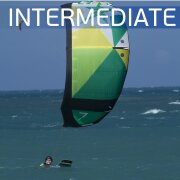
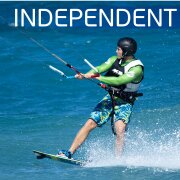
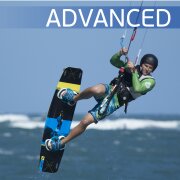
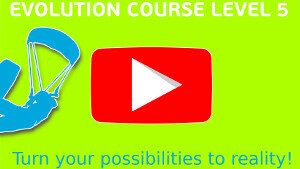
.png)

